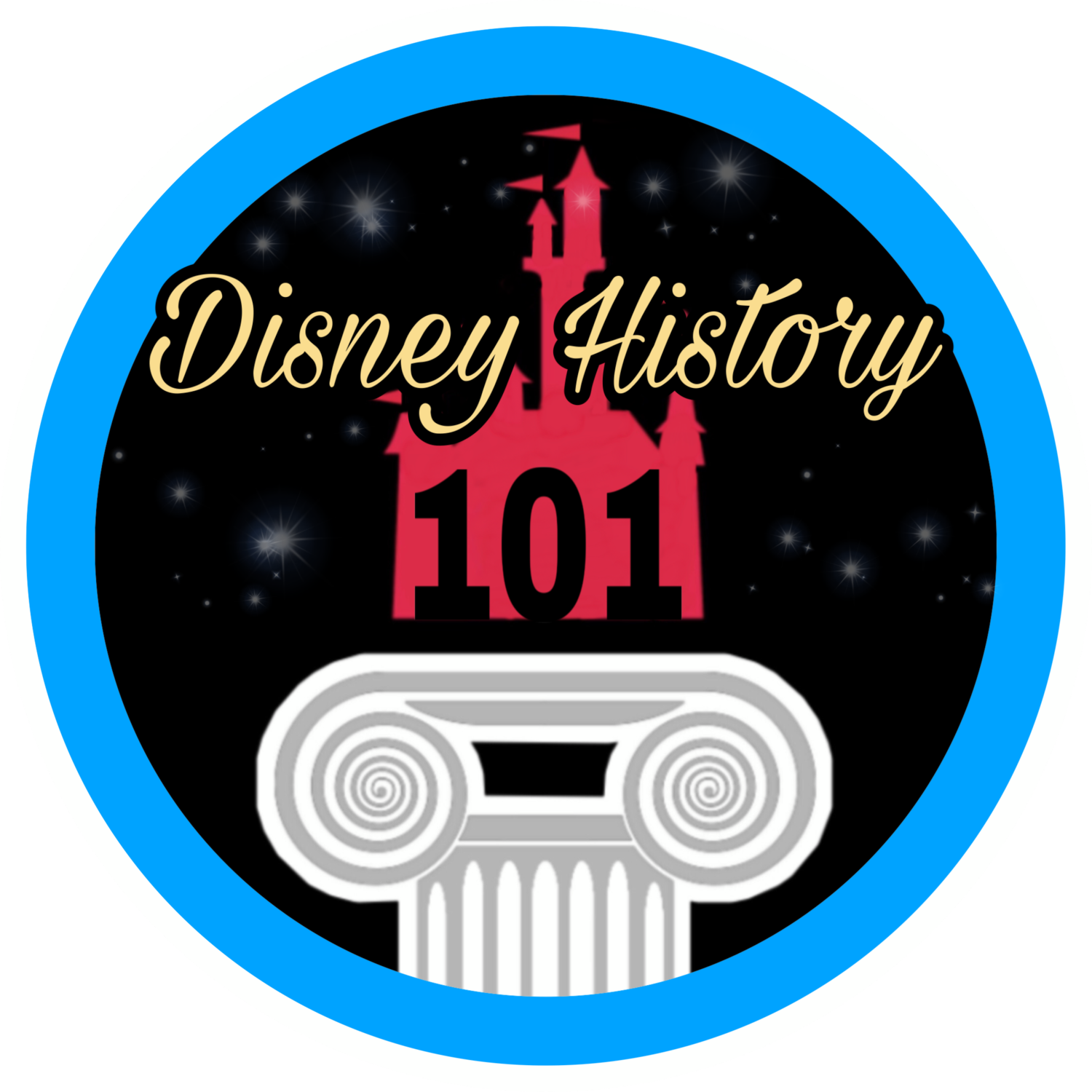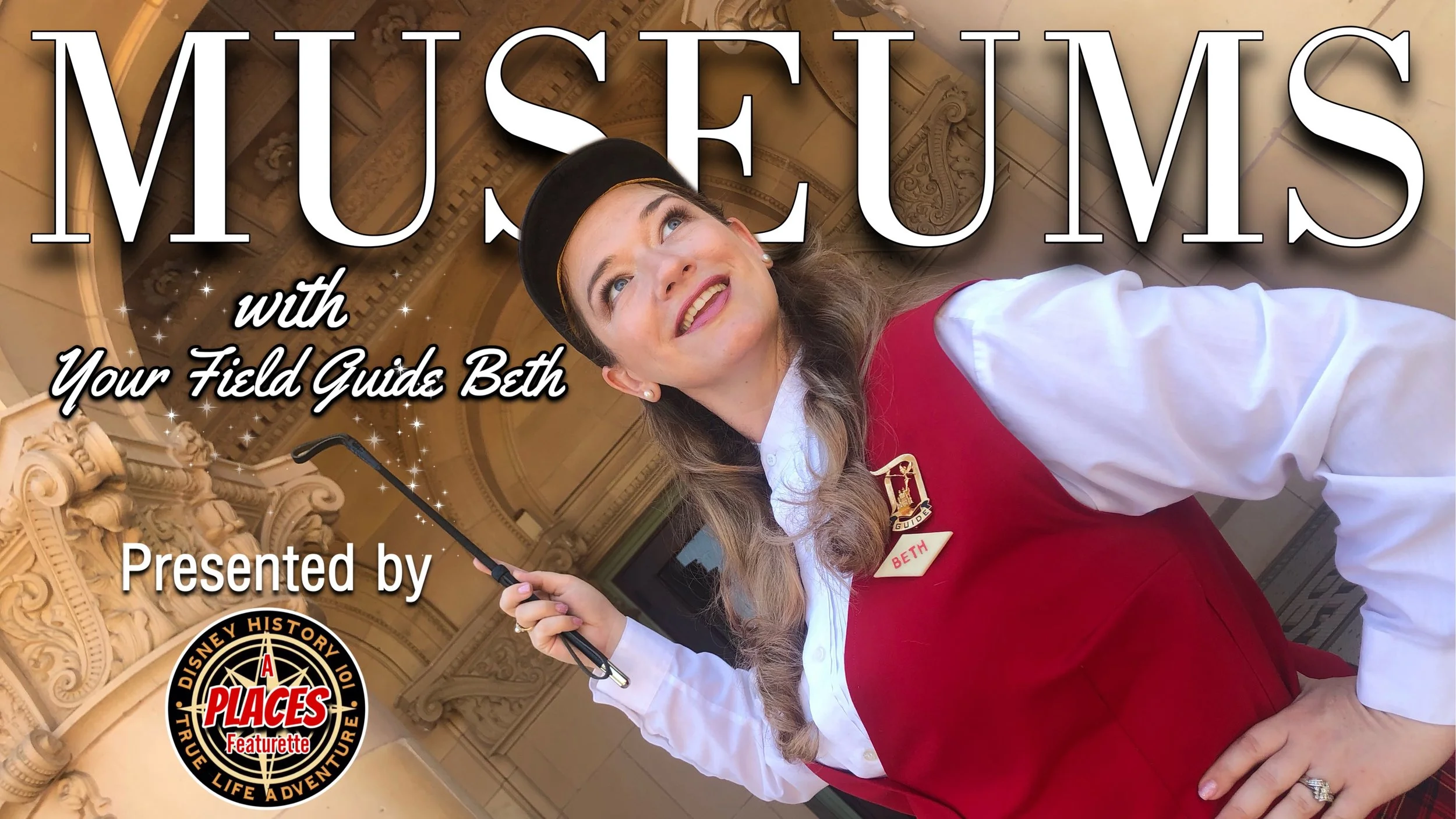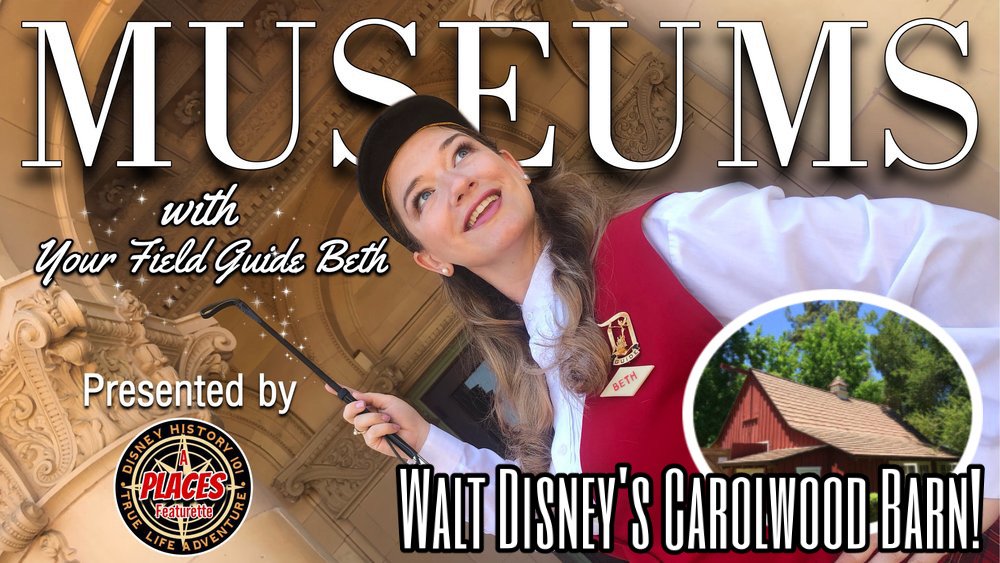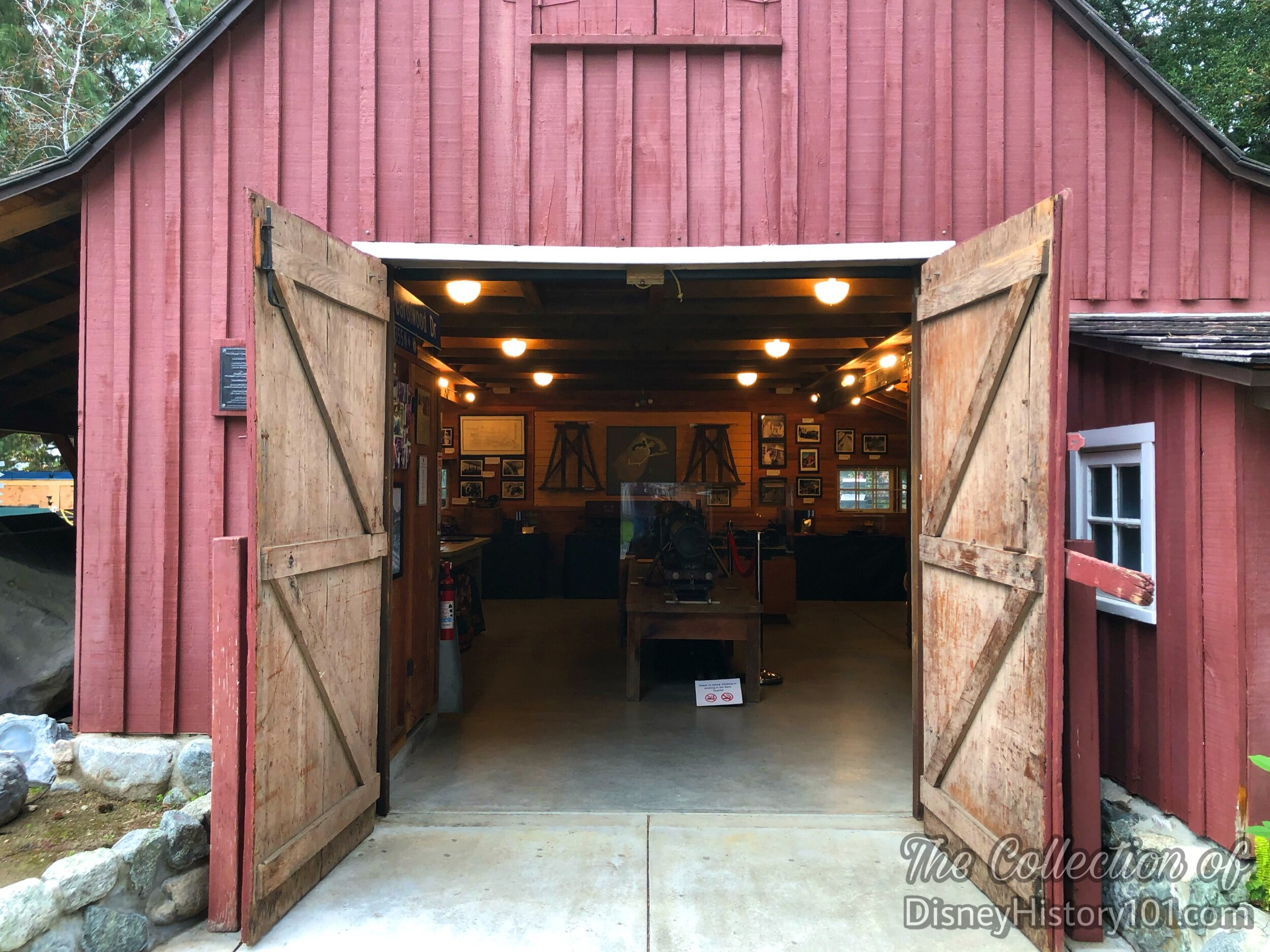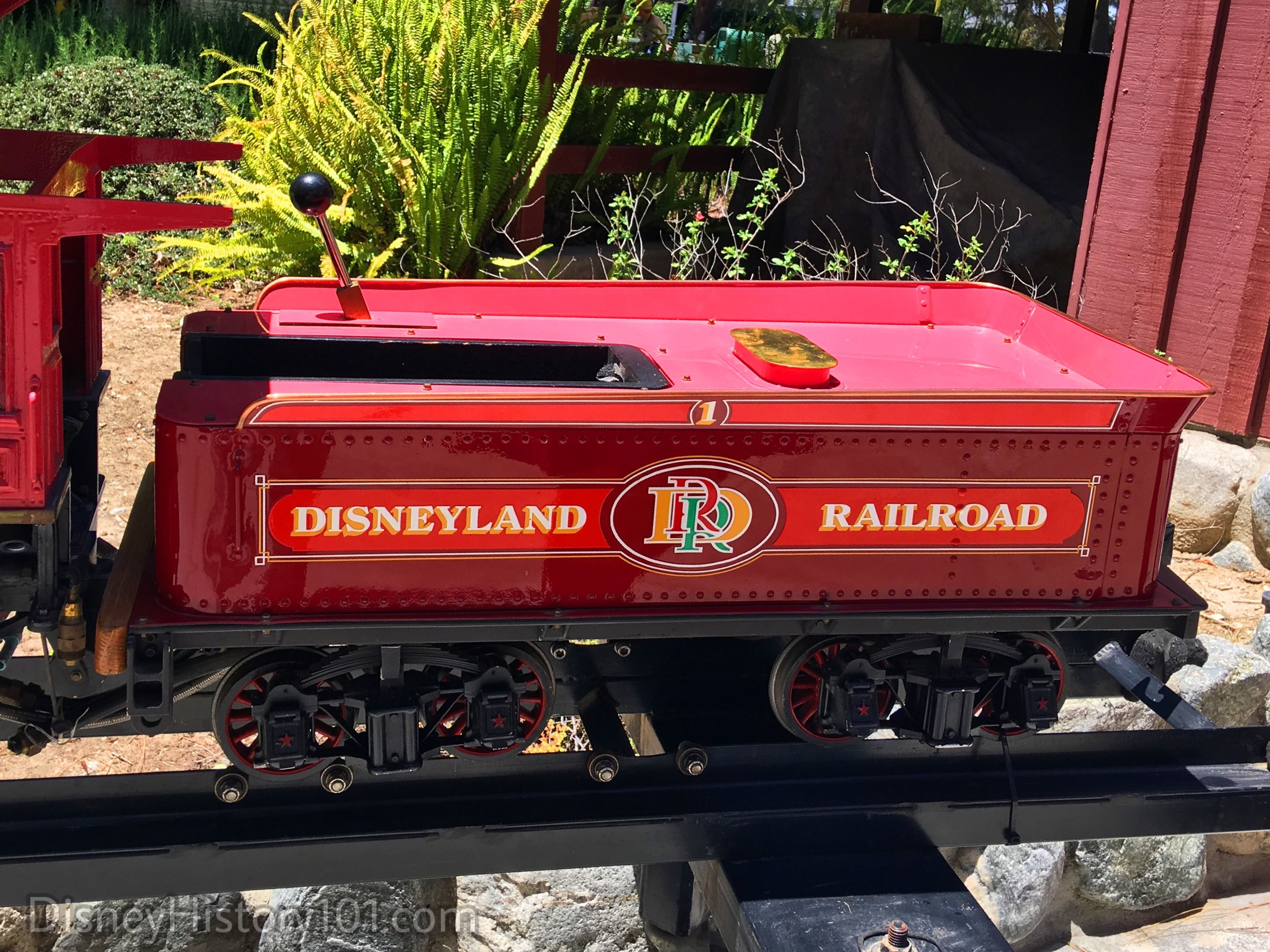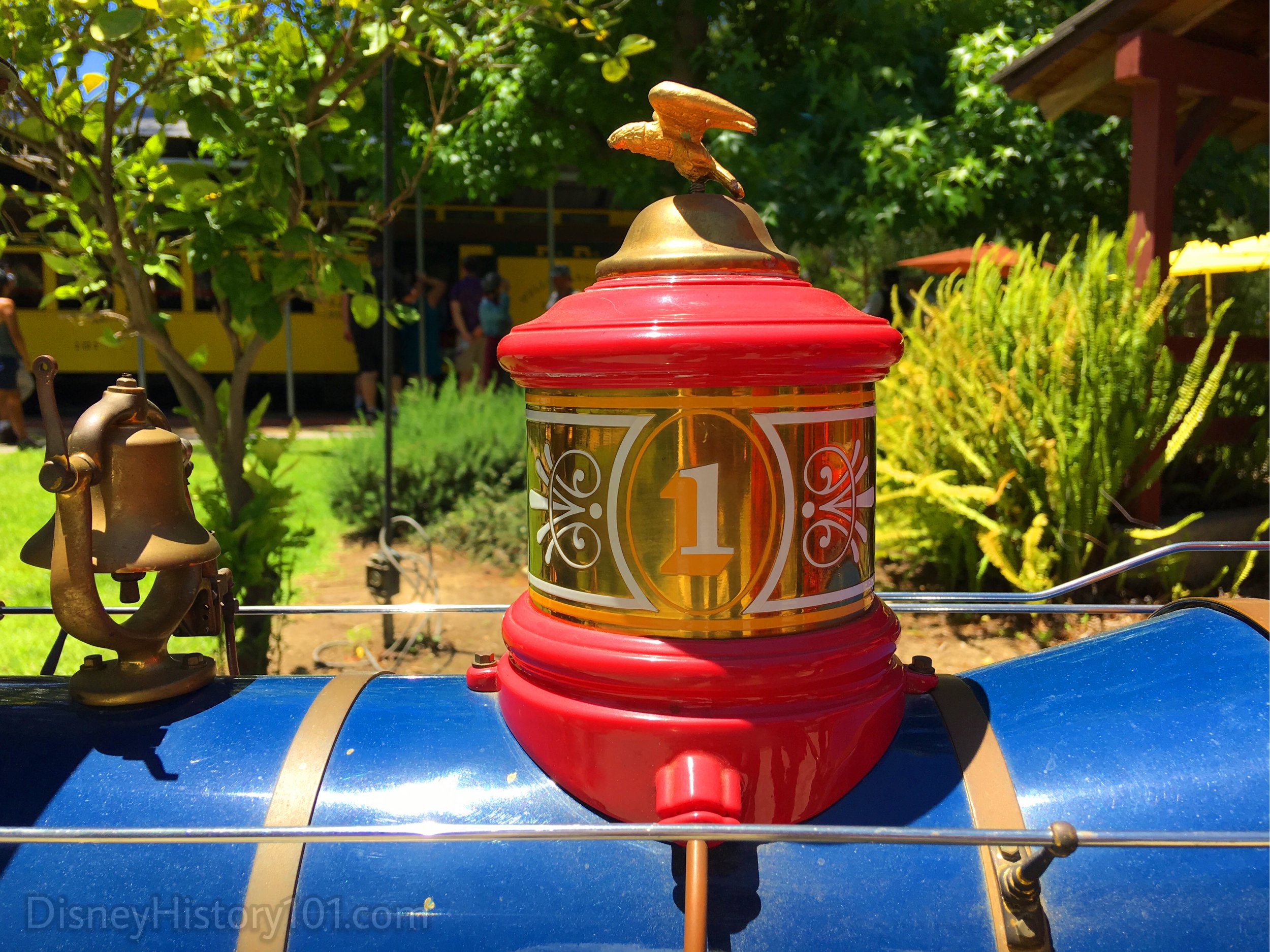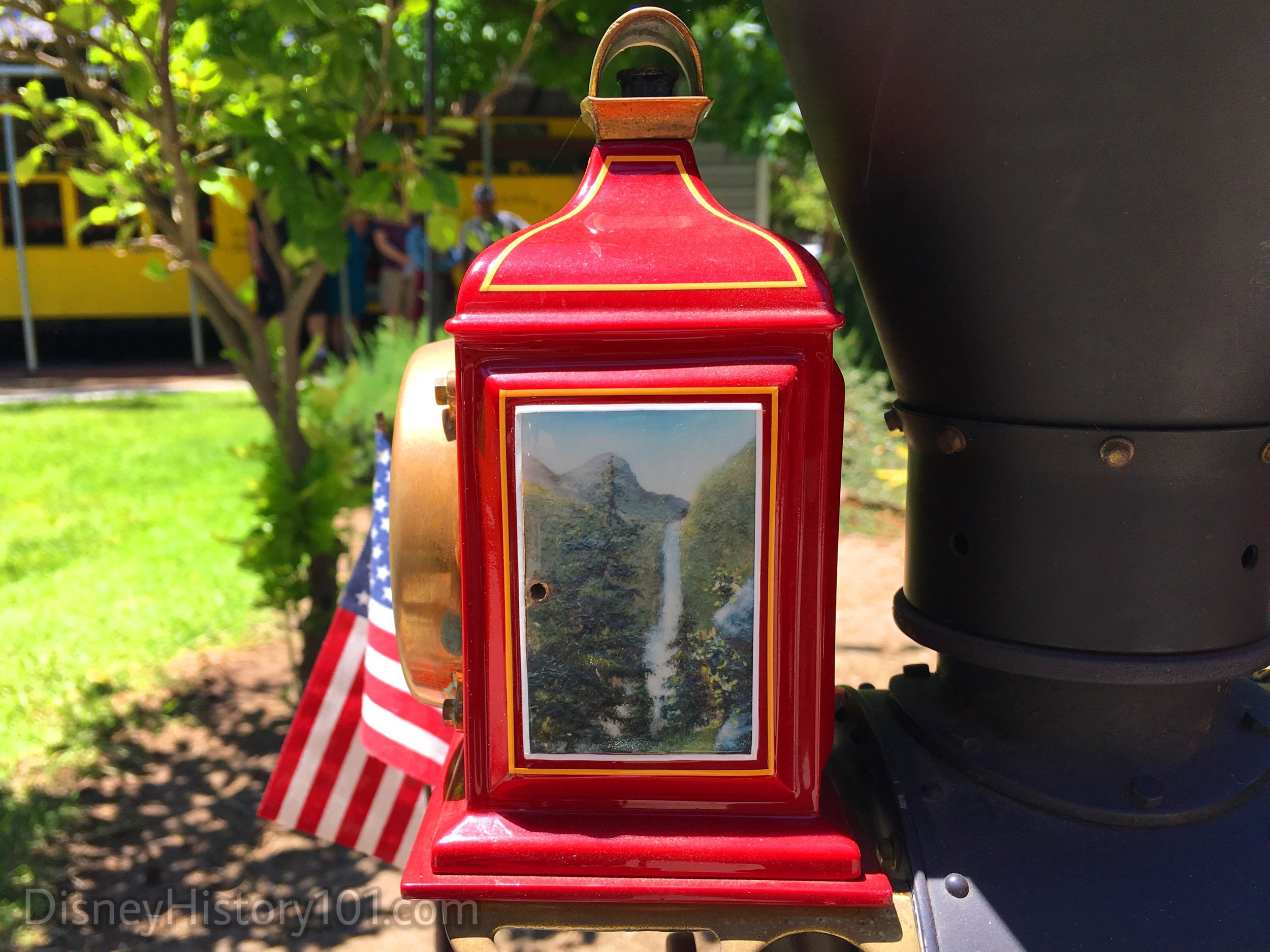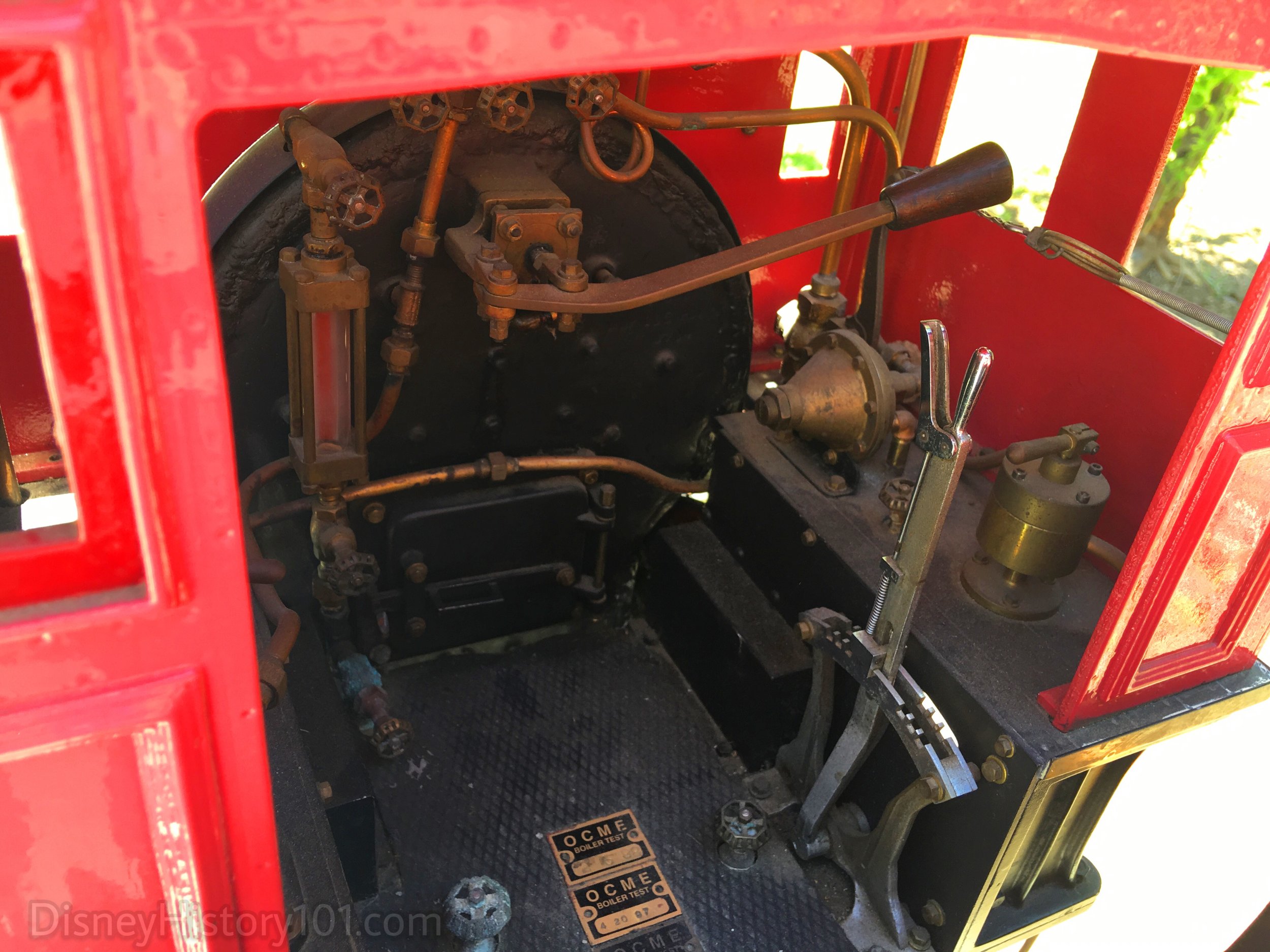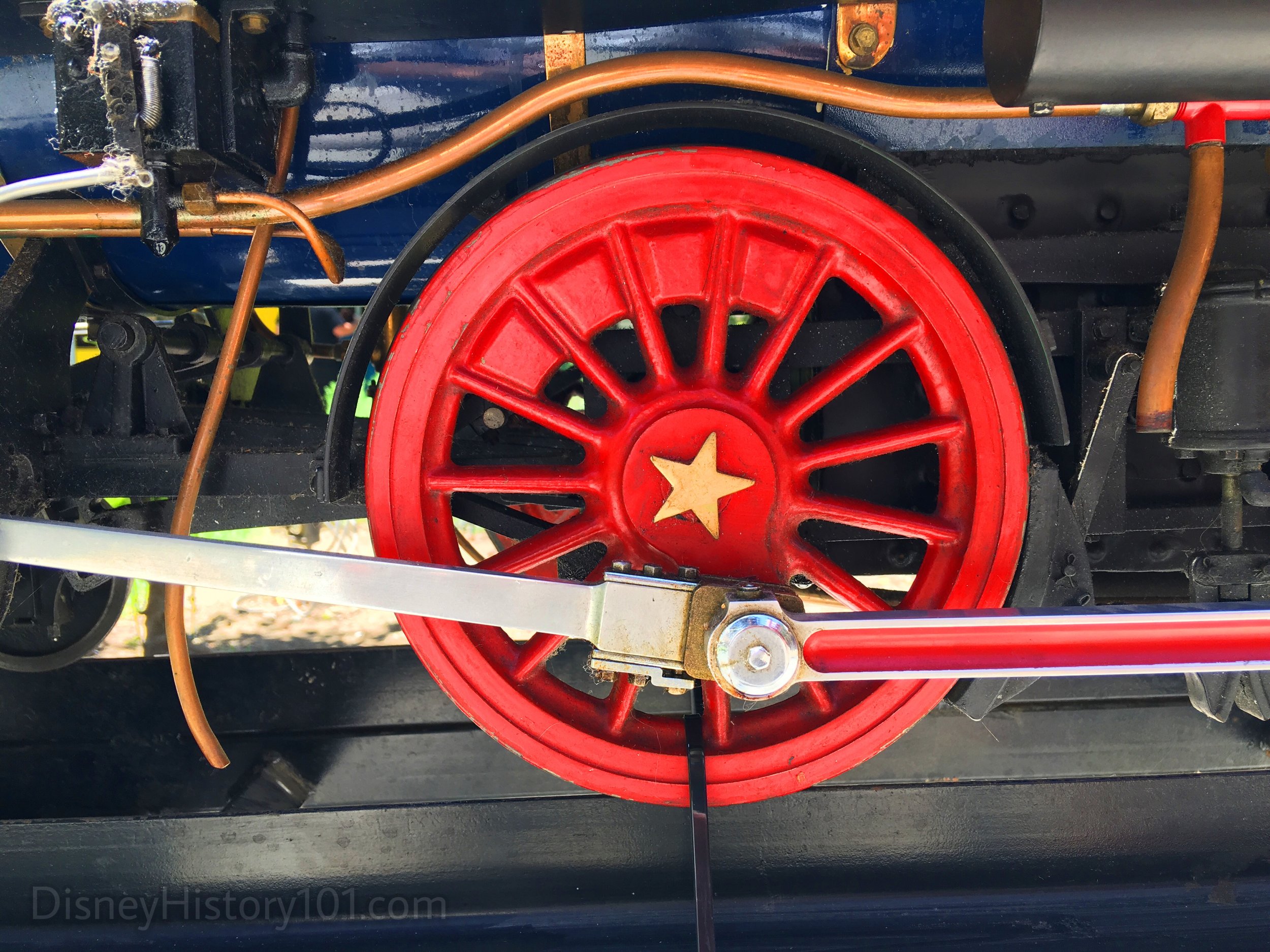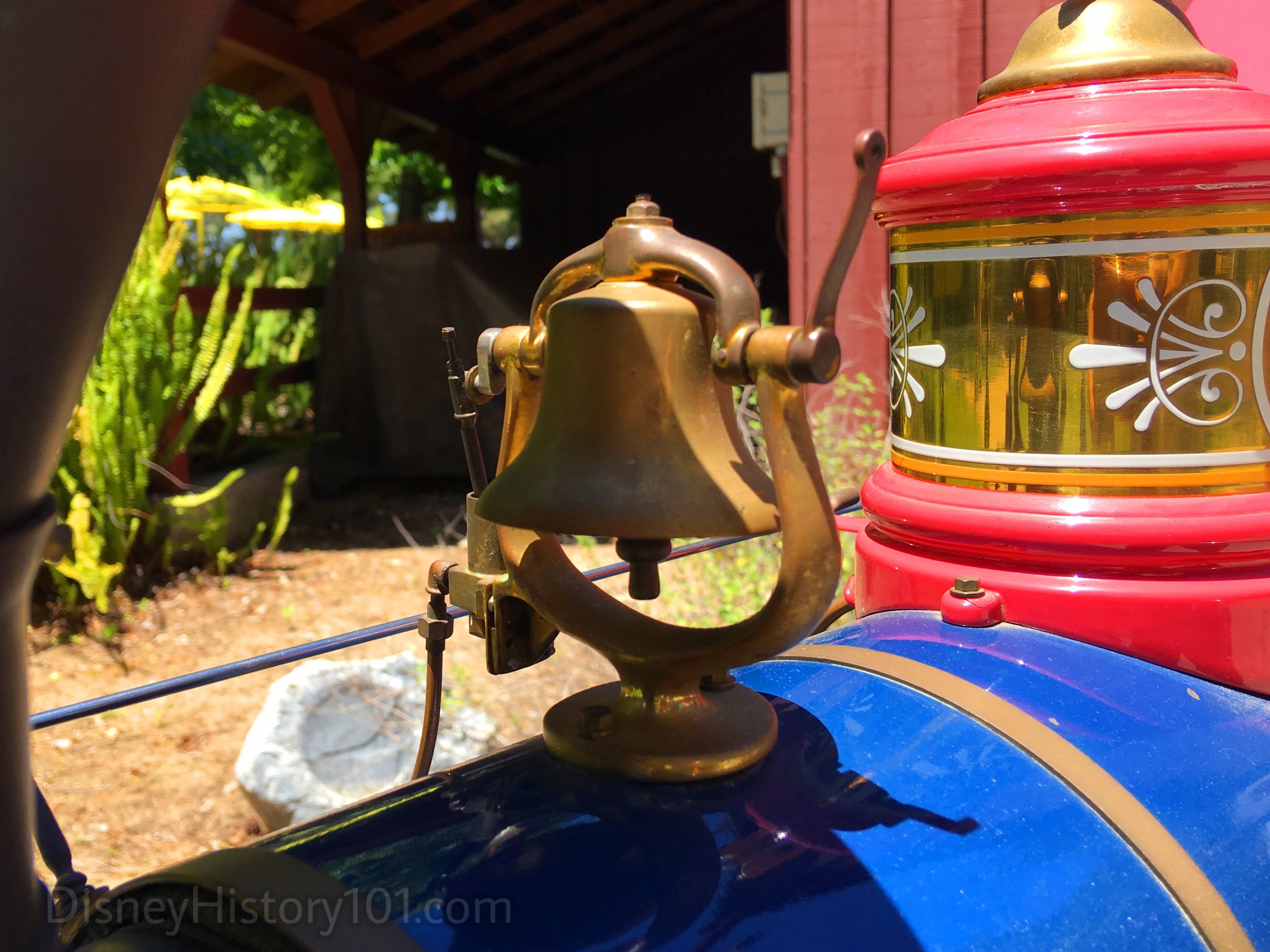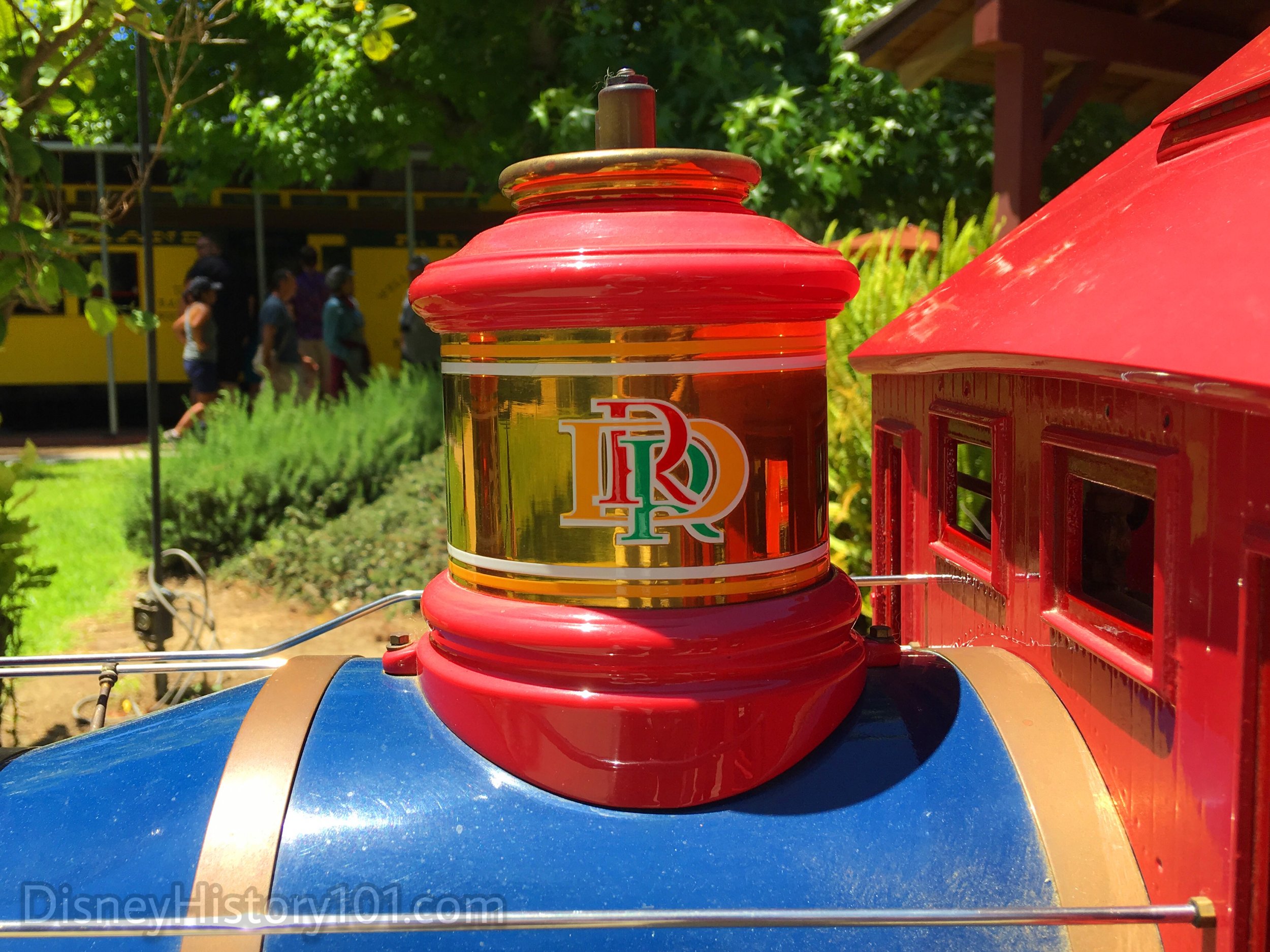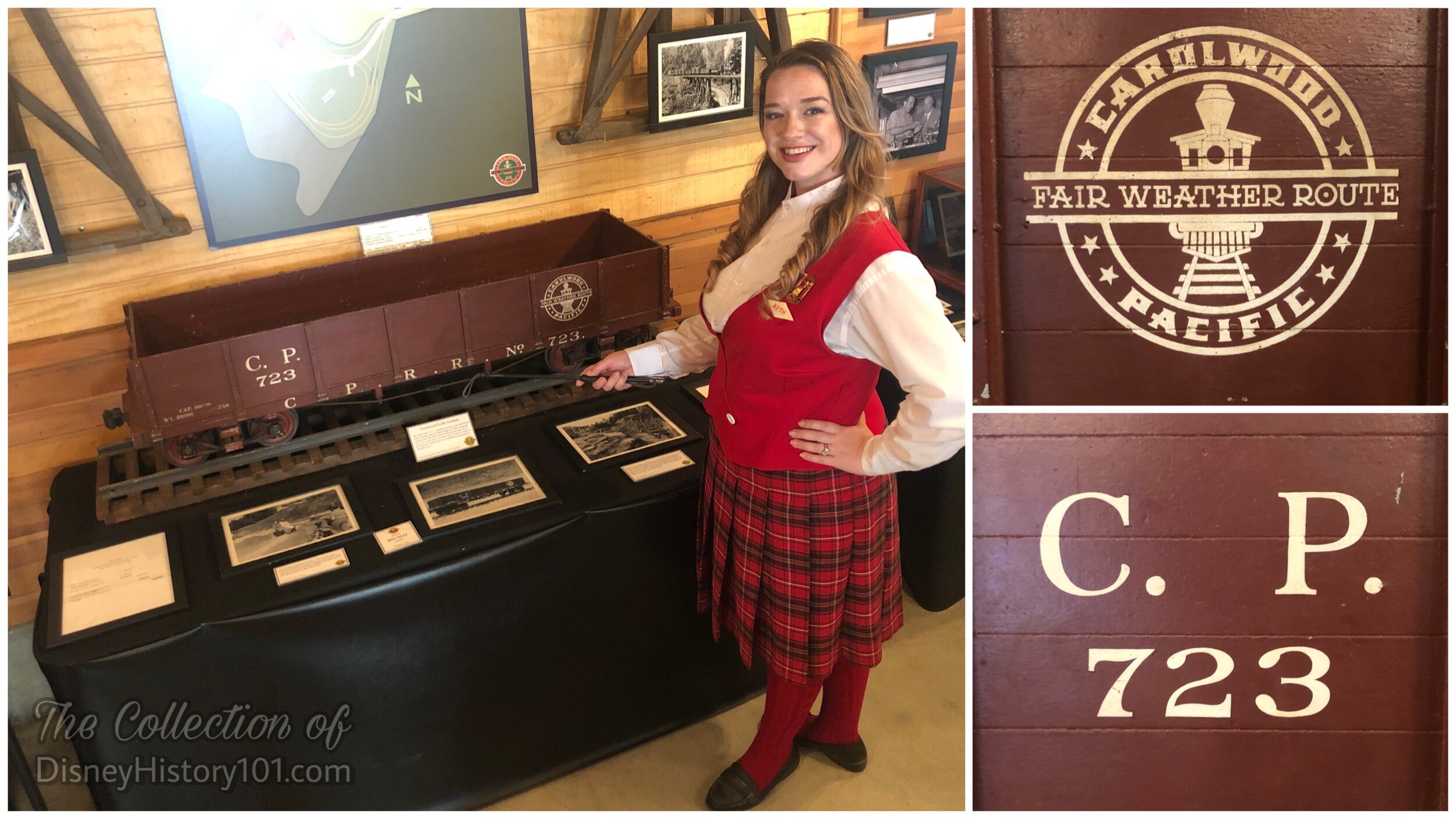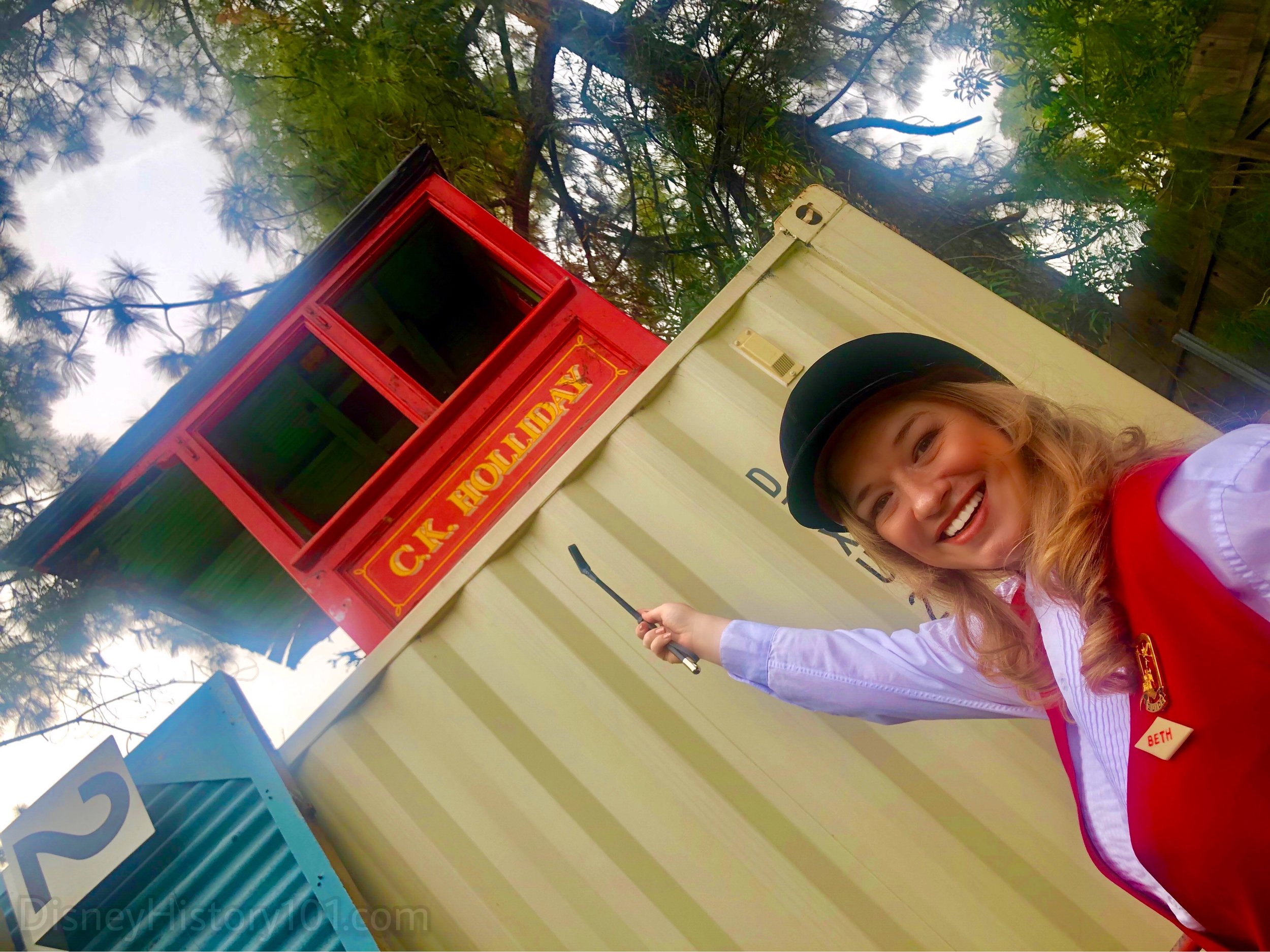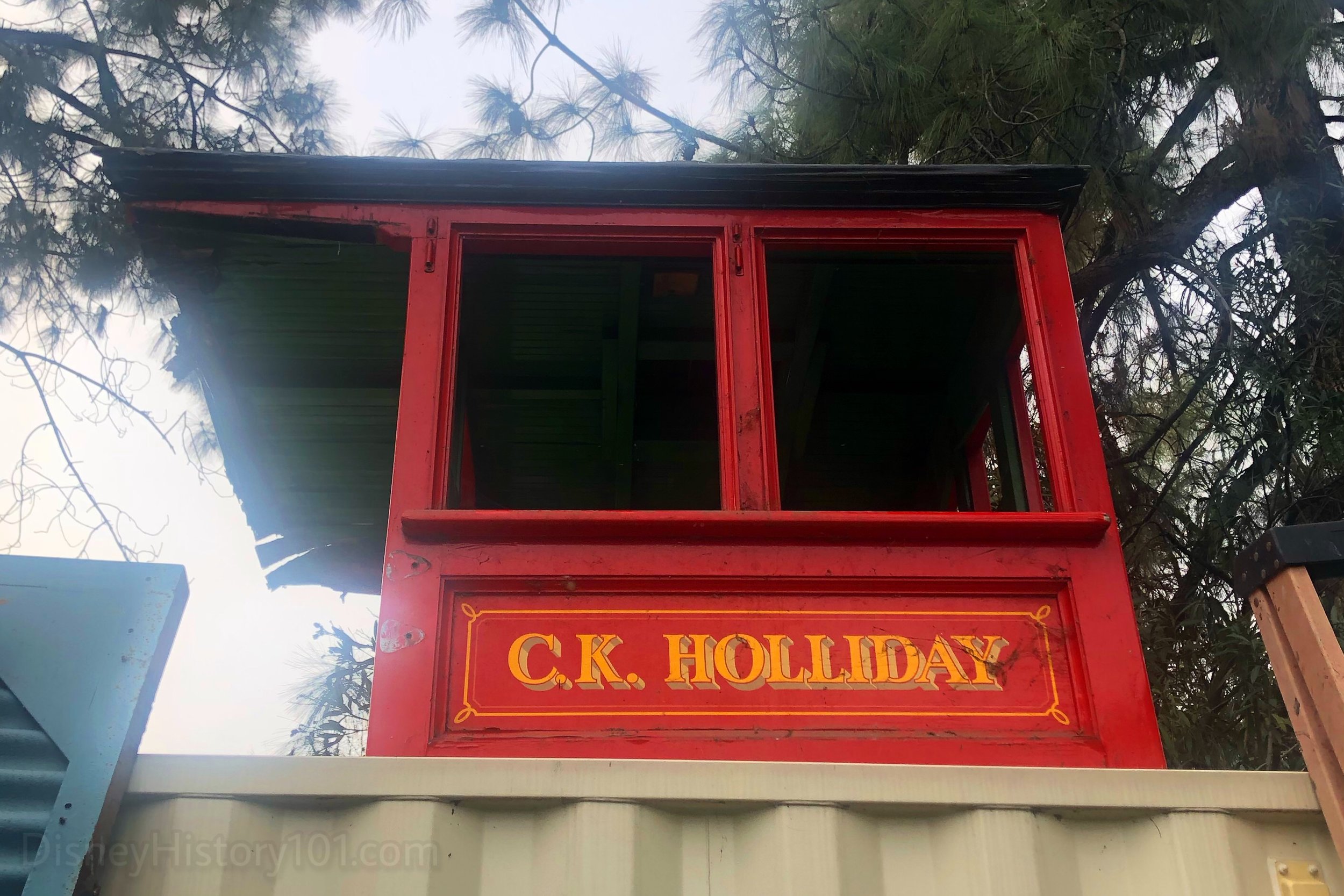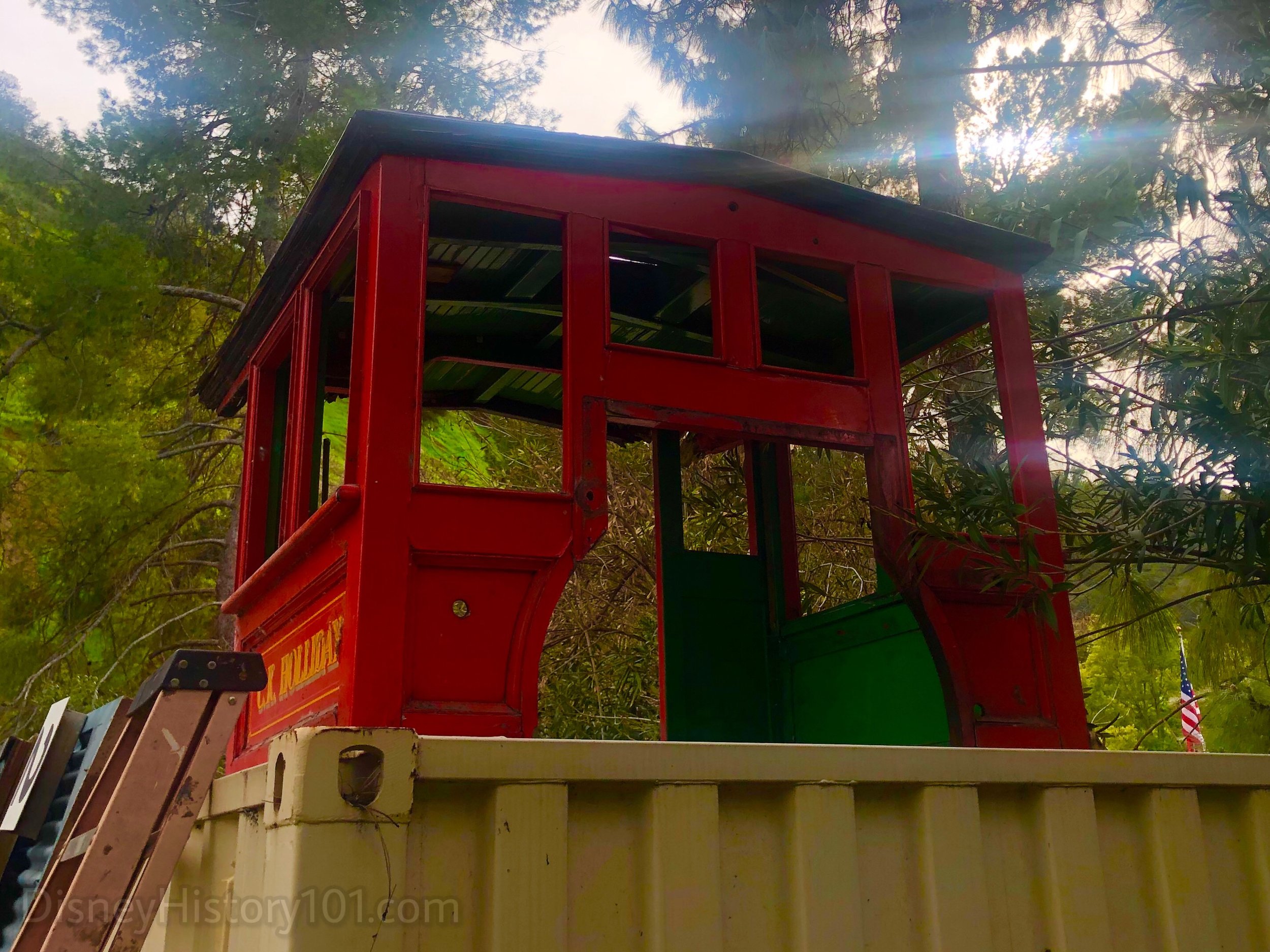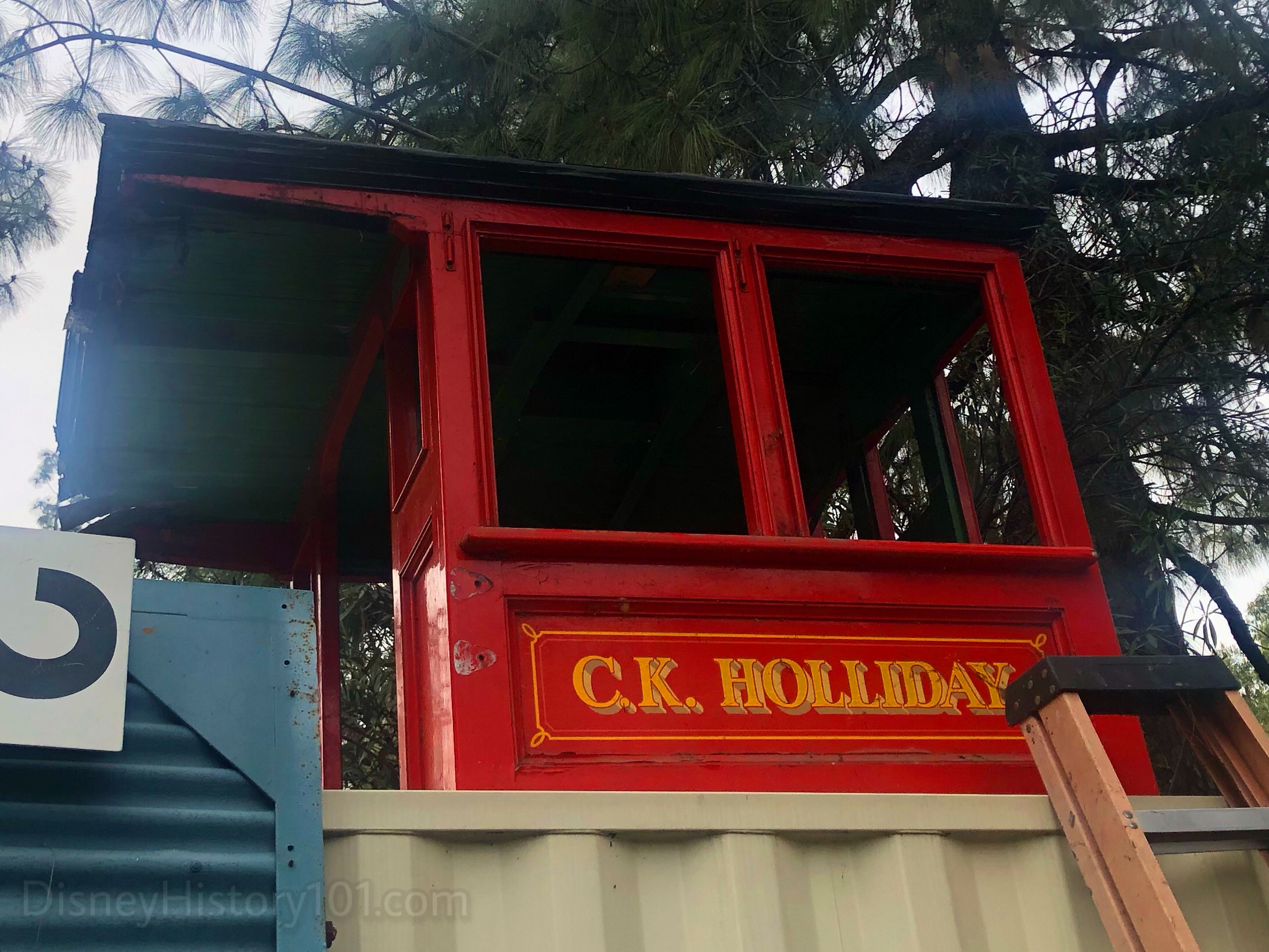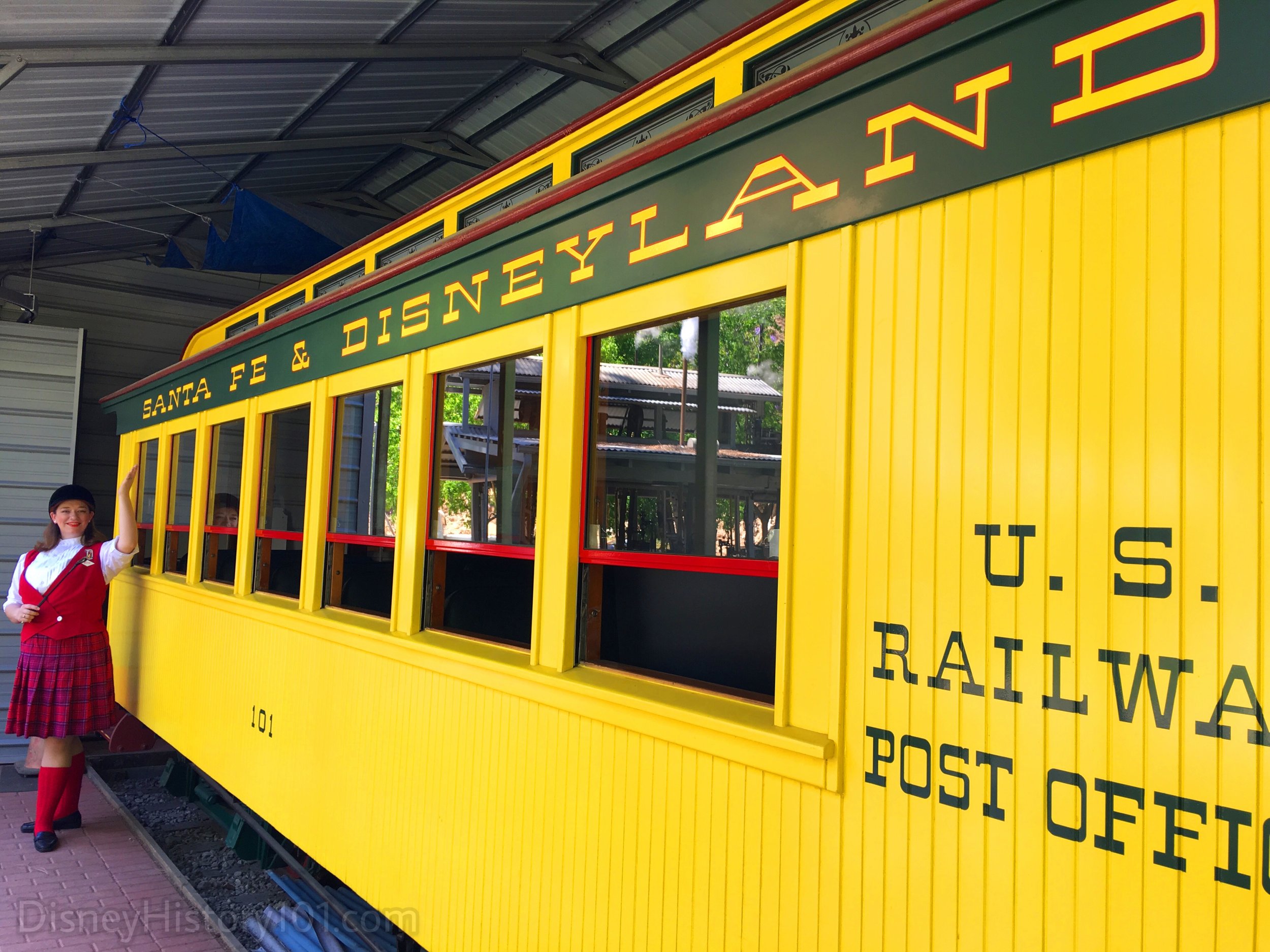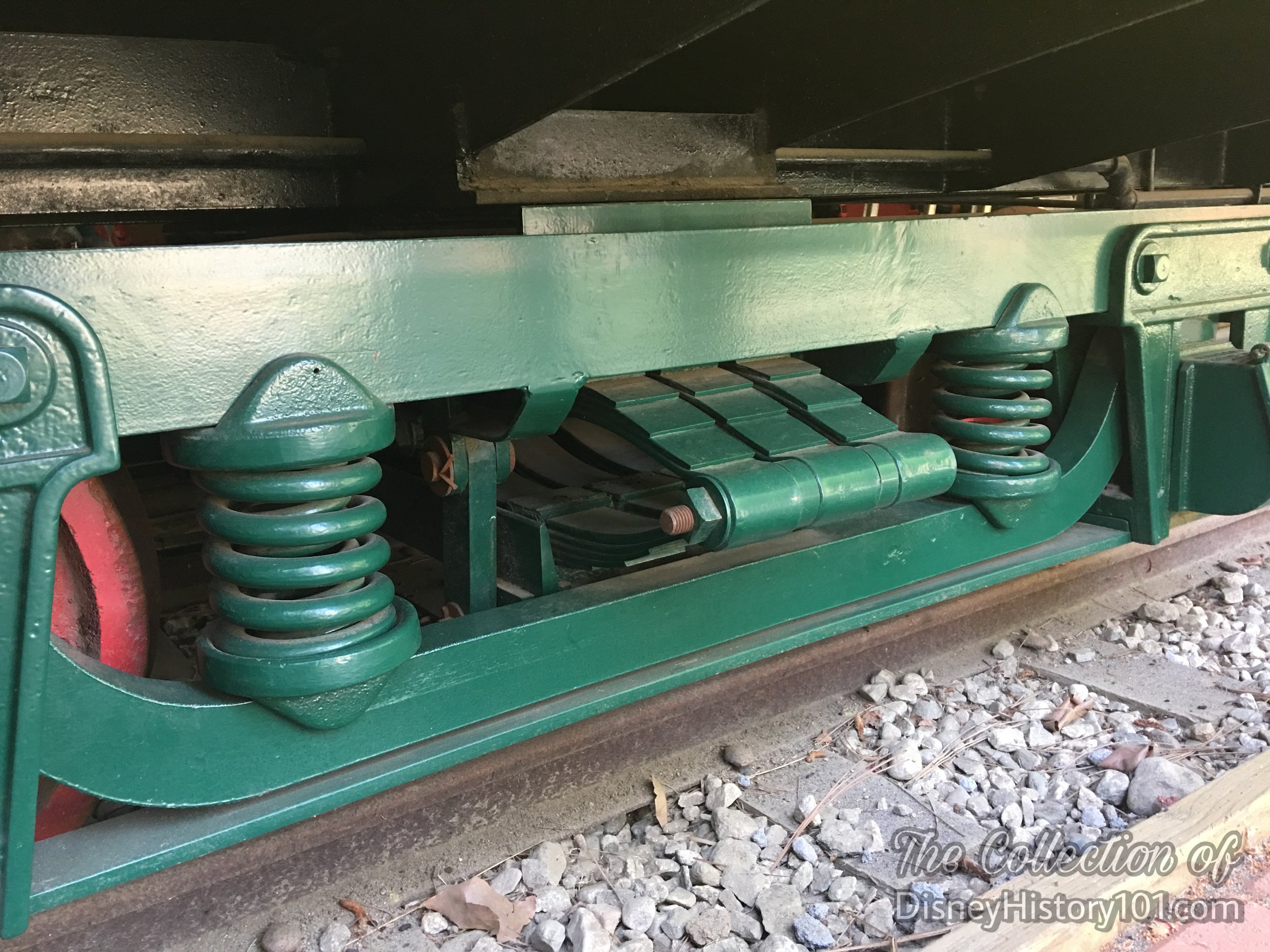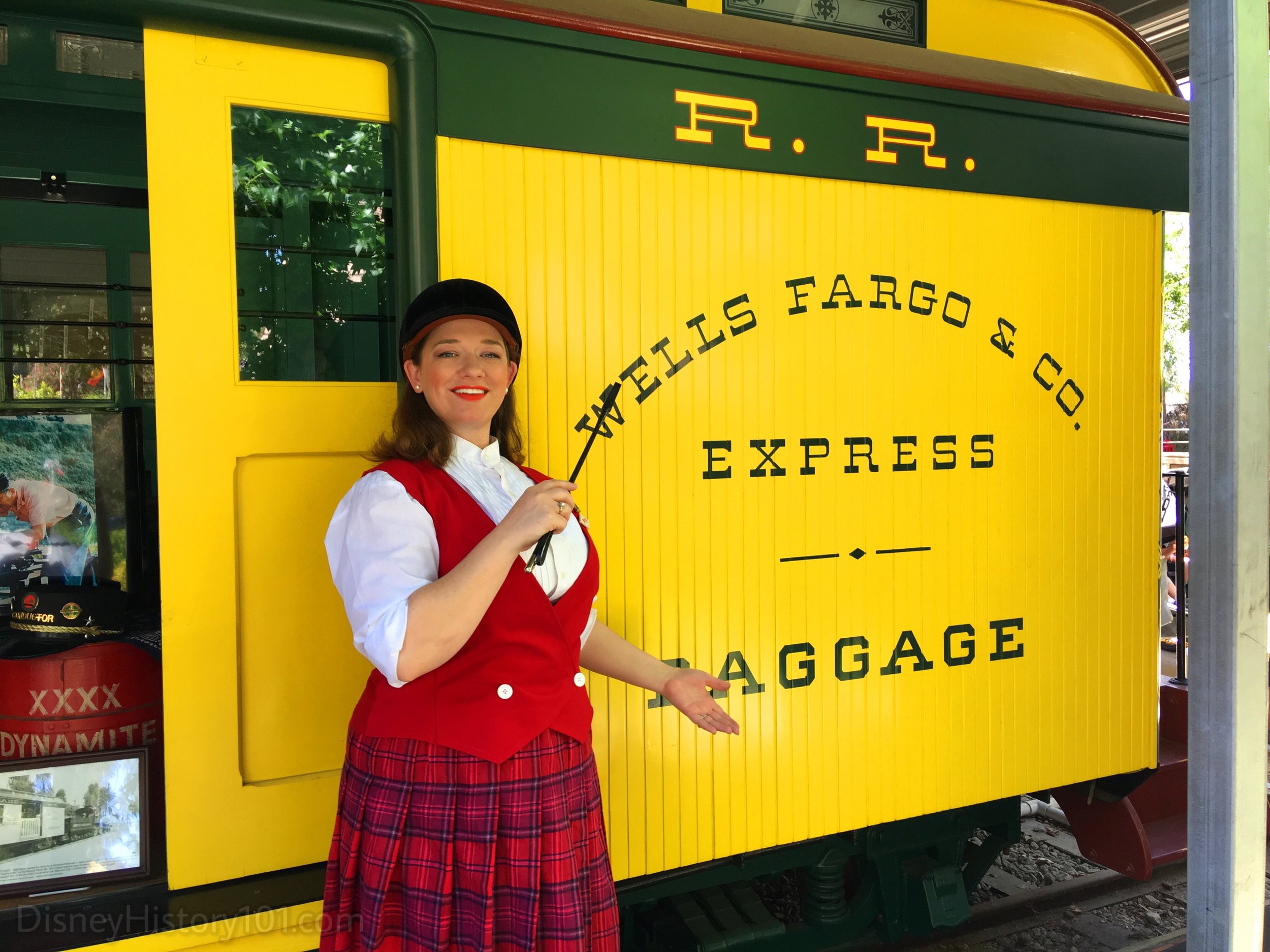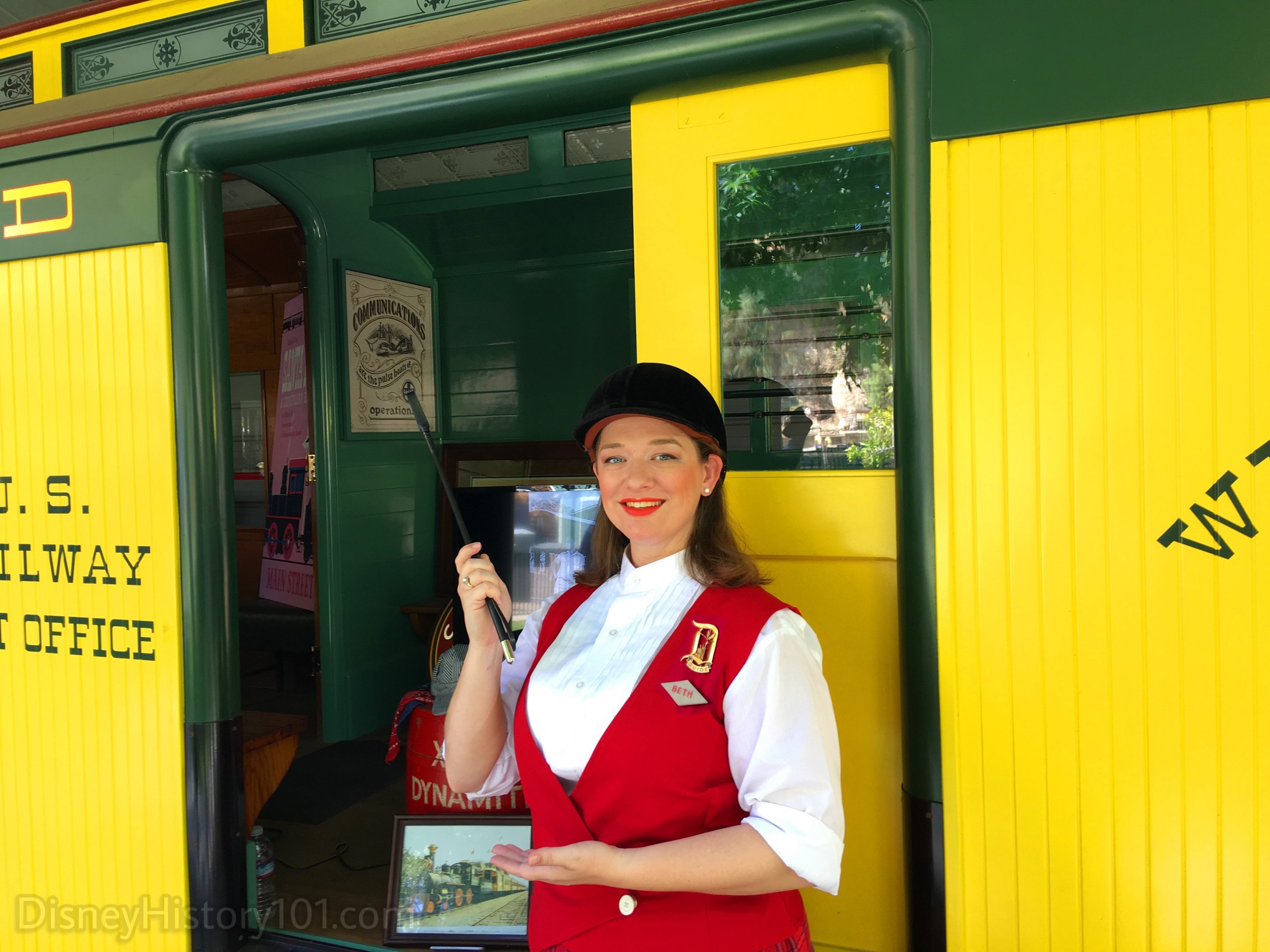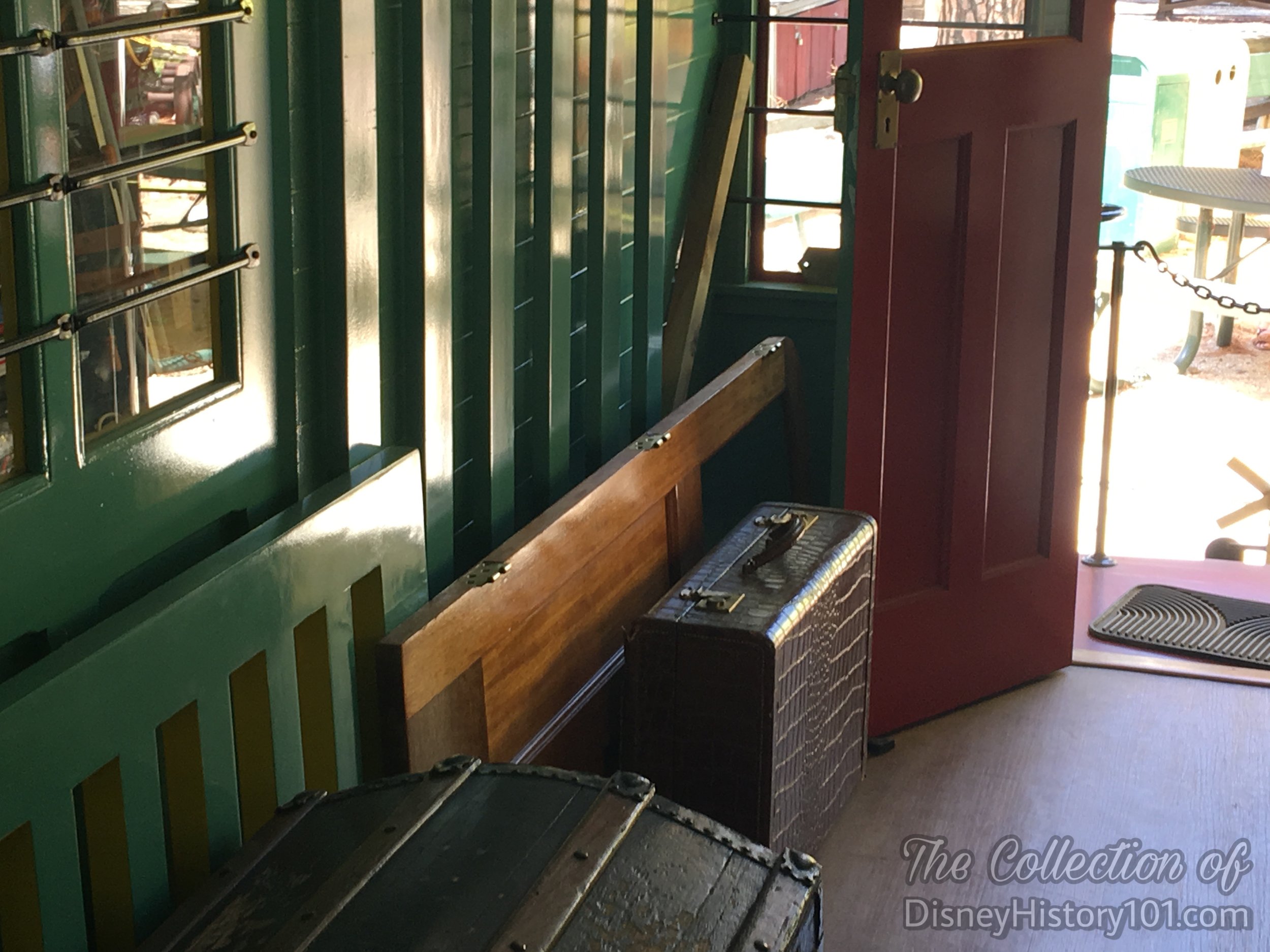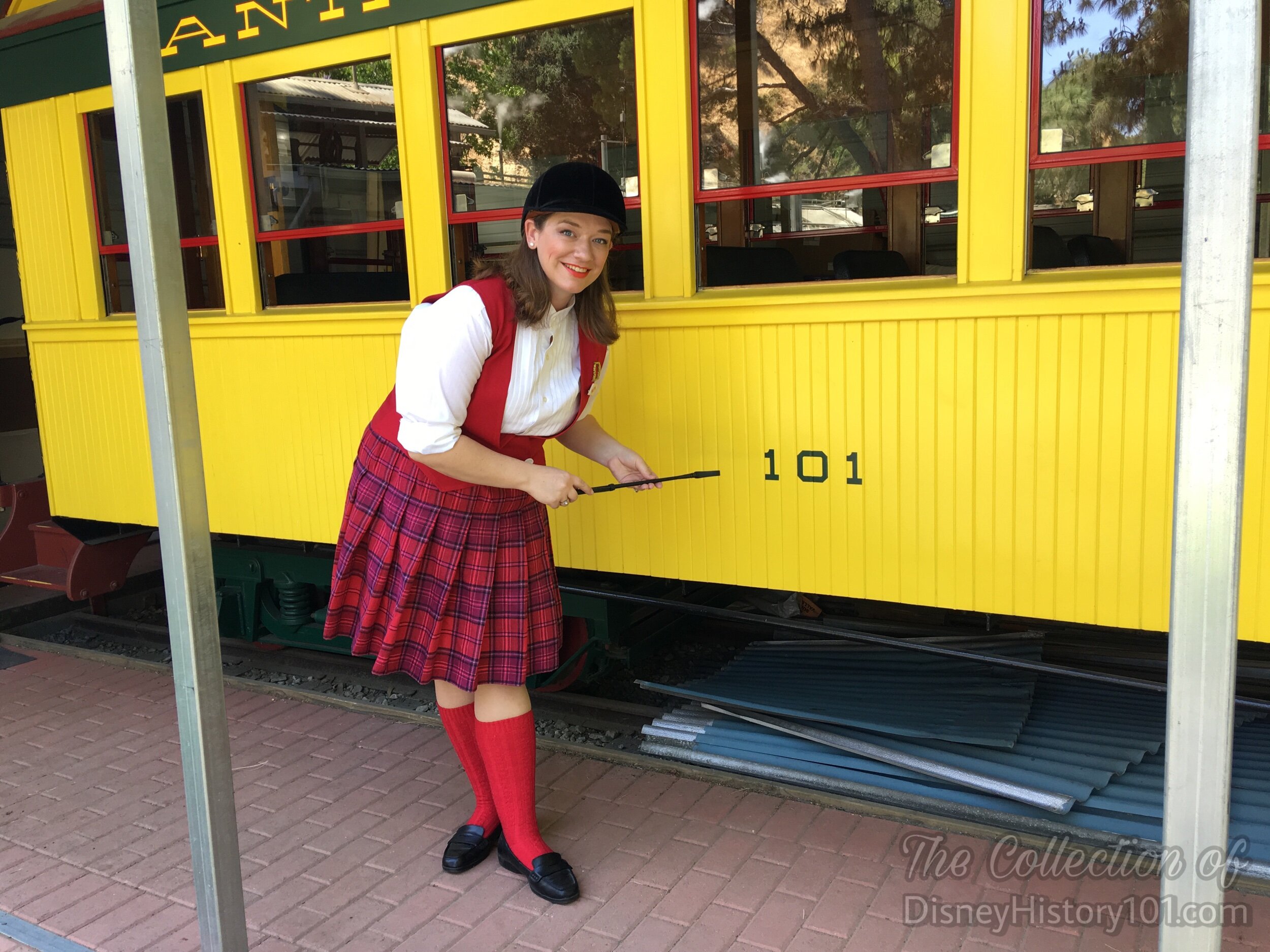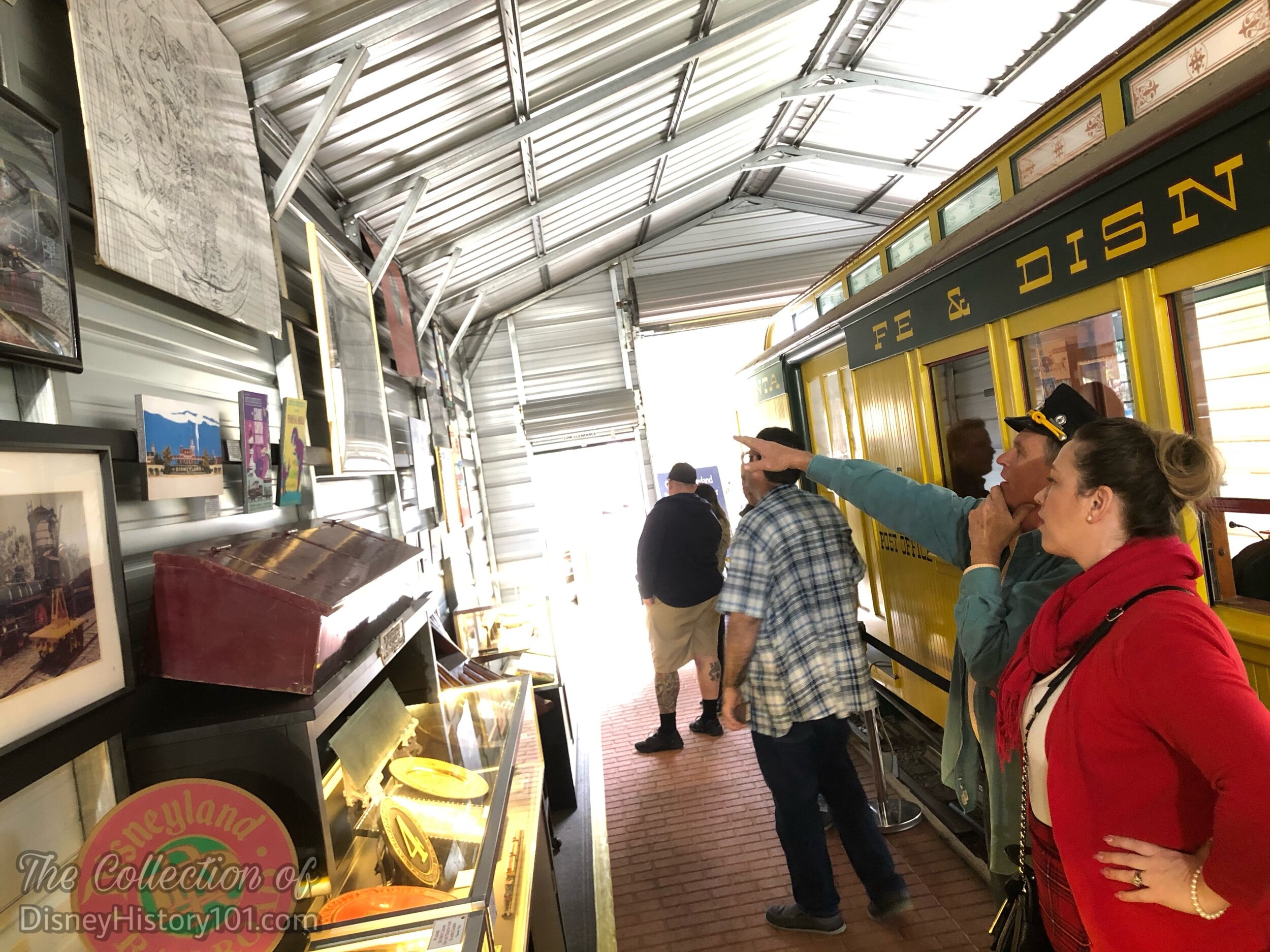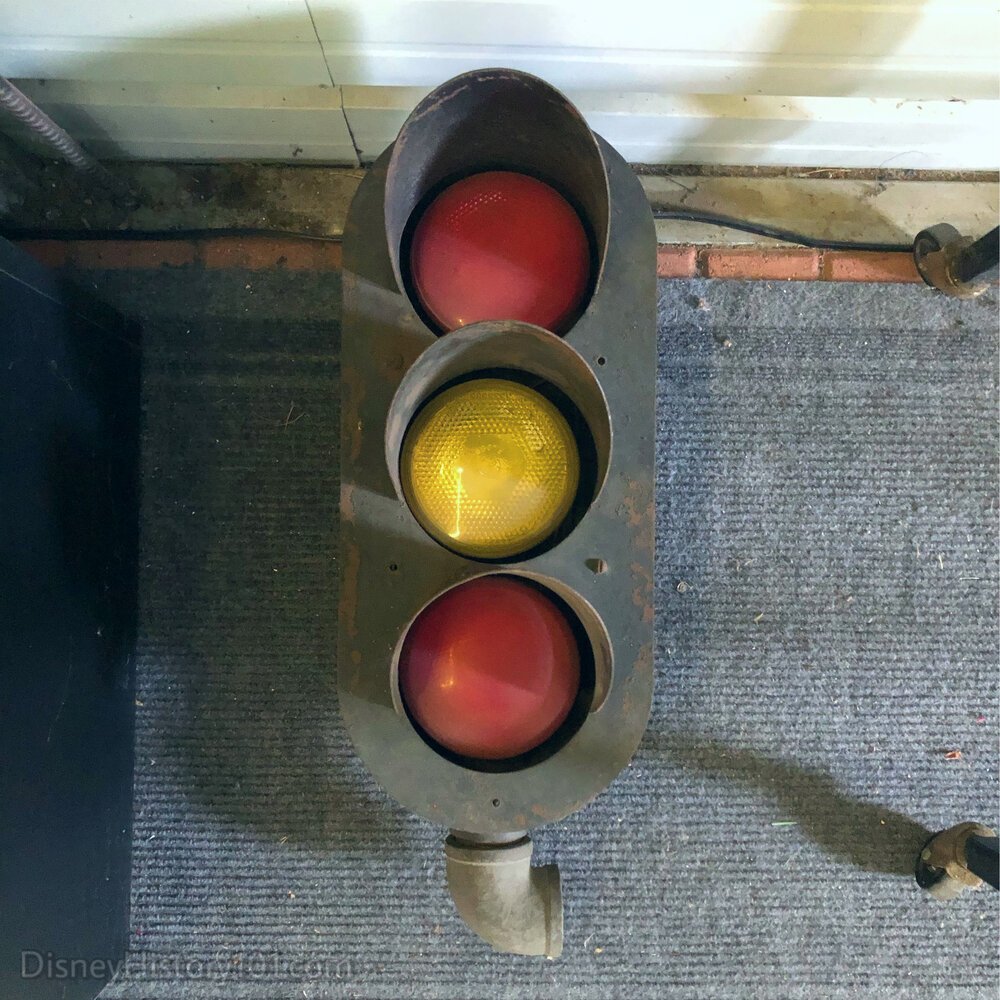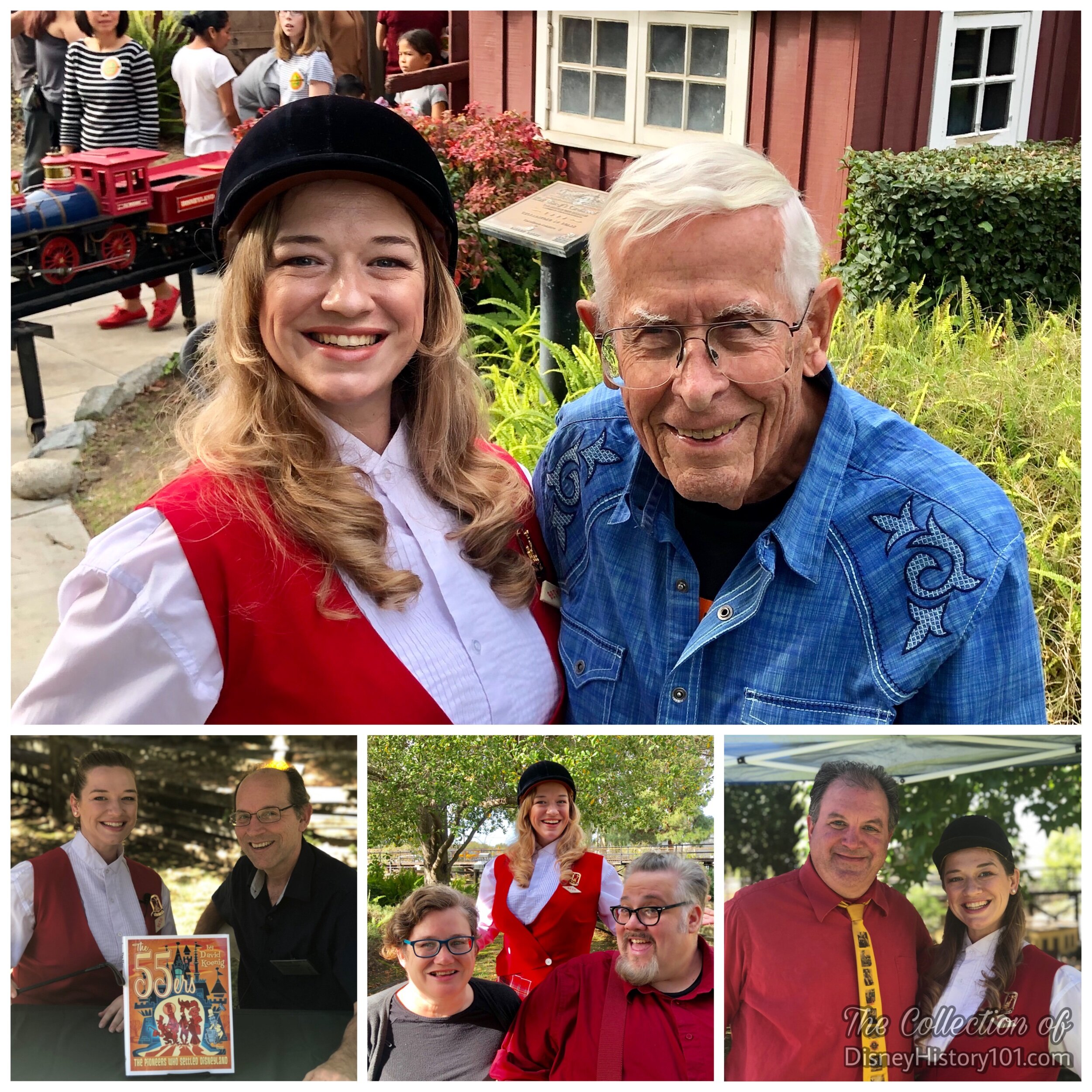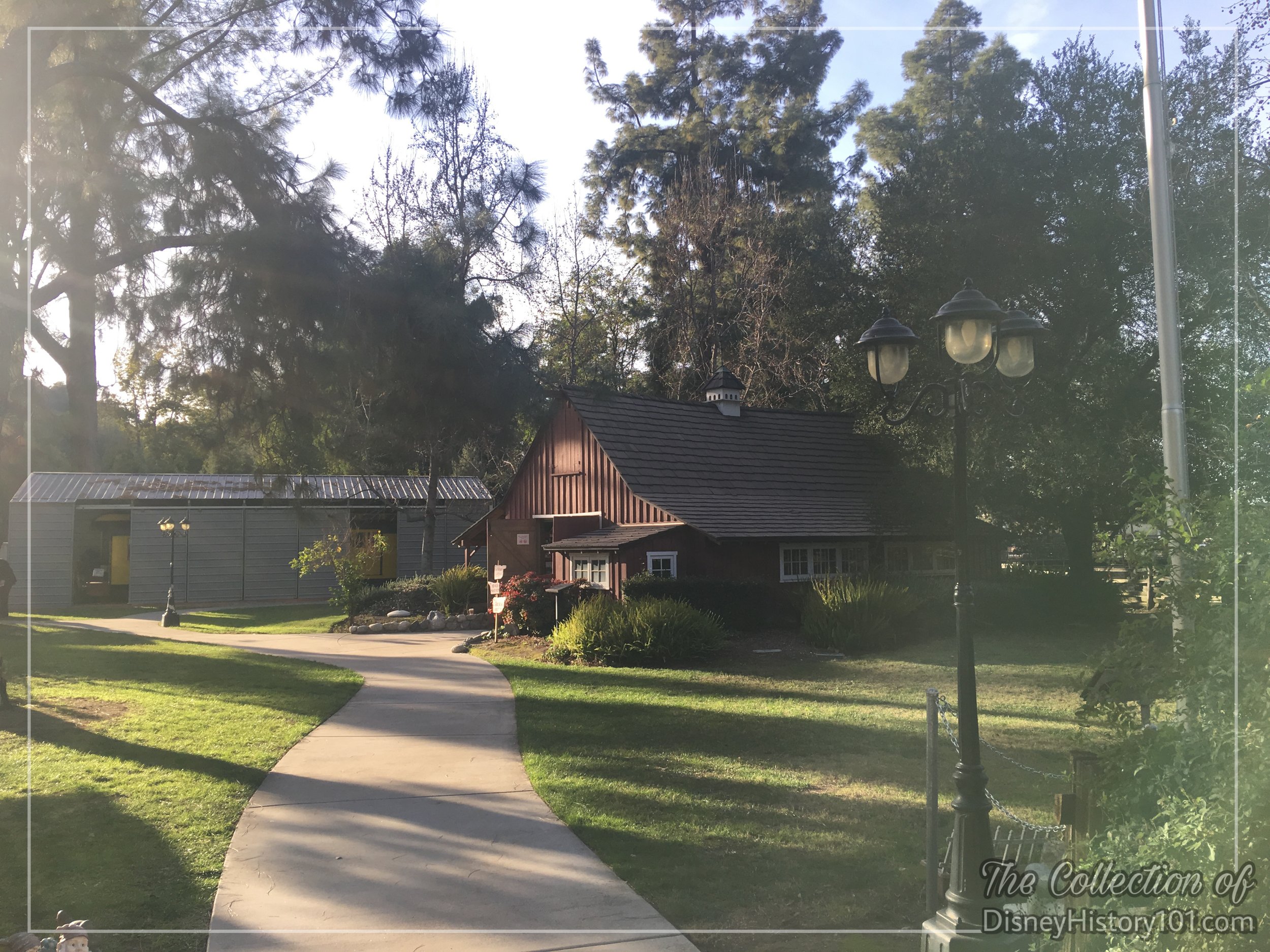5202 Zoo Drive, Los Angeles, California 90027
If you’re a fan of Walt Disney, then you know that there are several “must see” museums that preserve fantastic collections pertaining to the life, work, and legacy of the man! Thanks to Ron and Diane Miller, the Bay Area holds an extensive tribute to Walt Disney’s many achievements of his life’s work and legacy, while the town of Marceline, Missouri preserves local history of the Disney family story. But there’s one particular museum entirely dedicated to Walt’s life-long passion - his love of railroads - Walt Disney’s Carolwood Barn in Los Angeles, California!
“The Condensed Carolwood Pacific Story”
It’s a fact that trains had played a role in the life of Walt Disney, during “the time he was a news butcher, a person who sells papers, drinks and candy on the Santa Fe Trains, on the Santa Fe between Kansas City, Missouri and Jefferson City, Missouri.” Fast forward past his arrival in Kansas City and to his arrival in Hollywood. By the 1940s, Walt’s interest in them was piqued, when he befriended one of his animators named Ward Kimball. Ward invited Walt to quite a few backyard steam-ups of his Emma Nevada engine on the rails of the Grizzly Flats Railroad. The pair soon went on a momentous holiday to the Chicago World’s Fair, where Walt’s fascination with railroads and trains was renewed in 1948. The following year, Walt and Lillian Disney purchased a five-acre estate, located at 355 North Carolwood Drive in the Holmby Hills of Los Angeles. The property was home to what has been described as “a spacious mansion, pool, garage with pool house, and an expansive backyard,” in addition to its most memorable feature - a narrow gauge railroad (Imagineered by trusted members of the Studio staff and Walt himself)!
According to Diane Disney’s “The Story of Walt Disney”: “When Mother and Father were drawing plans for their new house-the one they've lived in for the last seven years-Father decided to lay his tracks all around over the grounds. We thought he was crazy and said so. ‘If I can't have a railroad around my house,’ he argued, ‘what's the use of building a new house?’ At one point Father went to his attorney, Soence Olin, and said, ‘Spence, I want you to draw up an agreement between me and my family. I want it to say that I'll be allowed to own a right of way through my place for my railroad.’ ‘You don't have to do that, Walt,’ Olin said. ‘The house will be in your name anyway.’ ‘Spence,’ Father said, ‘I’ve been married longer than you have and I know more about women. There are a lot of women in my family and I need this in writing.’ At Father's suggestion, Olin dug up some old railroad right of way papers to make sure of the wording. Then Father brought the document home. ‘I won't agree to build a new house,’ he said, ‘unless you sign over a right of way for my tracks.’ Mother gave in. ‘all right,’ she said. ‘As long as the railroad doesn't mar the beauty of the place.’ That was all Father needed. He began to lay out a fine, sweeping run for his train.”
The railway (with its 1872-style locomotive that Walt named “Lilly Belle”) was enjoyed by immediate family members from near and far (like Walt’s nephew), friends in the motion picture industry, and many other family friends for a number of years. In Diane Disney’s words: “Father’s train has enough cars to seat a dozen friends, and he likes to give his guest a ride. He built the engine himself, copying a full-sized locomotive made in 1890. It's a perfect little coal-burning model, scaled an inch and a half to a foot. When Father fires it up, he wears his engineer's cap, overalls, and work gauntlets. He carries an oil can with a long, slim nozzle.” To accommodate the storage and further maintenance of his rolling stock, Walt had a small version of his father’s Marceline Barn architecturally rendered (by set designer John Cowles) and then constructed on his home property.
According to Walt’s Carolwood Barn Museum representatives: “After the death of Lillian Disney in 1997, the Disney family sold the Carolwood property. It has been developed with a massive 20,000 square foot mansion, bridle trails, swimming pools, and tennis courts. Everything that was built by Walt and Lillian over a 50-year period is gone, except for one of the Carolwood Pacific tunnel openings, the entry gate, and the barn… The track of the Carolwood Pacific Railroad was donated to the Los Angeles Live Steamers by Lillian in 1968.””
It seems like only yesterday, that the main Show Building and showpiece (Walt’s cherished Carolwood Drive train barn) was rescued from demolition by daughter Diane Disney Miller and brought to its current location. Over twenty years, the modest non-profit Carolwood Foundation has helped the museum to grow and thrive - introducing “fresh” exhibits from its ever-growing collection. The museum has also amassed a number of supporters over the years, and many of these have become regular “special guests.” This has proven Walt Disney’s Carolwood Barn Museum not just a “bucket list” destination, but a regular hangout for Disney railfans and Disney Parks aficionados. But don’t simply take my word for it. Please step this way, as we explore the wonderful world of Walt’s Barn, and find out what makes this museum so special!
Early morning 2020 crowds anticipate what lies beyond the Main Gate of Walt Disney’s Carolwood Barn!
After waiting our turn to enter the Main Entrance Gate, alongside fellow Disney fans, our “fair-weather” tour route will take us to a very special first stop.
Please kindly and carefully watch your step over the rails, as we arrive at our first “station” - the Michael and Sharon Broggie Flag Pole.
“THE MICHAEL AND SHARON BROGGIE FLAG POLE”
Some of you may remember that when Lillian Disney passed away, the Disney family sold the Carolwood Drive, Holmby Hills property. The new owner planned to raze the entire structure (and surrounding land) to the ground, and redevelop it. Sadly, that would come to include Walt Disney’s train barn (a duplicate of the family’s old Missouri barn), and a place where Walt would go to relax and work on his narrow gauge Carolwood Pacific Railroad alongside fellow “railfans” from his Studio, like Ward Kimball, Ollie Johnston, and c.1949 Studio Machine Shop Manager Roger Broggie (who built Walt’s beloved 1/8th scale steam locomotive for his Carolwood Drive line). As mentioned earlier, Walt’s eldest daughter Diane (with the help of Roger’s son Michael and daugher-in-law Sharon Broggie) was able to rescue the little barn. With the further help of contractor Bill Abel, the City of Los Angeles and Los Angeles Live Steamers Museum, Diane relocated the historic structure, where it was ultimately reassembled and restored.
On July 19th, 1999, Diane Disney, The Walt Disney Family Educational Foundation, Steven L. So Orloff (Board of Recreation Park Commissioners President), Michael Broggie, and City of Los Angeles representatives warmly welcomed visitors to Walt’s Barn through a formal dedication held in Griffith Park, California! After driving the last nail in the ceremonious dedication, Diane Disney candidly shared some of her personal thoughts and feelings, divulging just what Walt Disney’s Carolwood Barn meant to her. “This is a lot of fuss for a real humble, little building. All barns are humble, and they’re important, and this is a very important little barn. Not just to me and my family - it was to my dad. It symbolized other barns in his life. And the things he did here had far reaching implications. You know, he was tinkering around in the machine shop here. He had lathes here. He did a lot of miniature furniture, and along with the engines. It lead to Disney, of course… I’m so thrilled to have it here… see it here. It is a piece of history. Our heart and our heritage is here in this place.” This statement was followed by a firm and sincere ”thank you” to everyone present for their support.
A Rededication Plaque (located on the Barn exterior) currently commemorates this momentous event, while another special plaque honors two special people who Imagineered the beginnings of this museum.
“All who come to this happy place” will want to take a moment to notice a plaque that pays honor to the Carolwood Society Founding Members who helped establish this “happy place.”
Similar to Walt Disney’s Magic Kingdom, there is a flagpole, with a very important plaque. This plaque (dedicated on August 4, 2012) draws our attention to both Michael and Sharon Broggie - those aforementioned Founders of the Carolwood Pacific Historical Society. Without them, Walt Disney’s Carolwood Barn Museum wouldn’t exist today!
“WALT DISNEY’S CAROLWOOD BARN”
As we walk down the main path (flanked by carefully manicured lawns) we gravitate toward the “weenie” on the right-hand side. It is a familiar sight - a veritable small-scale duplicate of the original Disney Family Gable-style barn situated in Marceline, Missouri. Until his passing, Walt carried many fond memories of hours spent playing in and around the original barn, mentioning, “it was a beautiful farm, with a wide front lawn. Big weeping willow trees.” So when the Disneys purchased their third Los Angeles house (at 355 Carolwood Drive, in Holmby Hills), Walt decided to bring a little piece of “home” there, by commissioning a smaller version of his beloved Missouri barn to be constructed on the Los Angeles lot.
Note the weather vane atop the cupola (left) with new shingles, the barn loft doors (center), the cast-iron pulley which would have been used to lift hay (right) and other parts which were originally drawn from the little details that Walt could remember by John Cowles.
There are many noteworthy structural elements that are derivative of the barn that Elias Disney built around 1906. Though aesthetically similar (and somewhat functional), these were constructed to a slightly smaller scale for Walt’s Carolwood Drive Property. Despite the size of the structure, it was still large enough to house a workbench, an electric control console to operate the switches, a lathe to machine parts, a telephone, and even a sink and lavatory.
The Shed Roof of what is sometimes referred to as the Front End Gable of a barn, would be utilized as a covered area for Walt’s engines. Photographic evidence shows that maintenance was occasionally performed here.
As with any Disney-centric project, the whole thing is the product of a talented and organized staff, blending technical knowhow with creative ideas. Before we head inside, let us pause to reflect on several aforementioned individuals and organizations (and others) who made all of this significant cultural preservation possible. They are first honored on that aforementioned plaque, located to the left of the Barn Doors.
The humble Walt Disney’s Carolwood Barn Re-Dedication Plaque is affixed to the left before you enter.
Through the doors, yet another list of Acknowledgements credits other contributors:
Bill Abel (General Contractor), Lee Adams (CTC Board Designer), Linda Barth (Los Angeles Department of Recreation and Parks), Michael and Sharon Broggie, Roger Broggie Jr., Dick Bruttig (Landscaping and Irrigation), Carolwood Pacific Historic Society, Jay Carsman, Paul Comstock (Landscape Design), John V. Cowles (Original Designer), Pam Dong, Leonard Evans, Morgan “Bill” Evans (Landscape Architect), Expert Growers, Miguel V. Fernandez (Architect), John Ferraro (President, Los Angeles City Council), Ronald Fogarty, Ray Fox (Original Carpenter), Tom Grace, Morrie Houser, The Law Firm of Milbank, Tweed, Hadley, and McCloy, Los Angeles Live Steamers, Terry and Robbin Lynn, Jeff Kaye, David Keim (Los Angeles Department of Building and Safety), Tom LaBonge (Special Assistant to Mayor Richard Riordan), Chris Miller, Diane Disney Miller, Walter E.D. Miller, MKS Specialty Finishes, Inc., Monrovia Nursery, Pentrex Media, Retlaw Enterprises, Inc., Richard Riordan (Mayor of Los Angeles), Steven Soboroff (President, Los Angeles Recreation and Parks Commission), Michael Sullivan (Landscape Design), Valley Crest Landscaping, Larry Varblow, Jack Verducci, Walt Disney Family Foundation, Walt Disney Imagineering, Bob Wilson, John Wolf, Terry Wortham (Captain Los Angeles Fire Department), and Luke Zamperini (Los Angeles Department of Building and Safety).
Why was the museum named “Walt Disney’s Carolwood Barn?” It’s simple. Walt Disney aptly titled his namesake narrow gauge Carolwood Pacific Railroad after the very street that it was located - Carolwood Drive!
It sure is hard to imagine just how much history is showcased both inside, and in the vicinity of this little red barn. One of the centerpieces of Walt Disney’s Carolwood Barn greets us as we step inside. It is a true conversation piece - a catalyst that was responsible for introducing Walt Disney to the man responsible for the design of many timeless Disneyland attractions!
“The Little Engine that Couldn’t - Walt Disney’s King George Engine”
It’s a fact that Walt would “blow of a little steam” from the Studio, through his pastimes and hobbies. In 1952 (and two years after his Carolwood Pacific Railroad commenced operation), Walt visited a world renowned model-train shop ("Basset-Lowke LTD" in London, England). While there, Walt purchased a 1/8 scale King George V live steam coal-burning locomotive (modeled after the full size King George V engine). He intended to add it to the rolling stock of his Carolwood-Pacific Railroad, and arranged to have a “hold” put on the only two pieces available at the little shop. Next he went to talk to Lillian and discuss how to get them home.
In the meantime, another American walks into the train shop inquiring about the very same engine that Walt just purchased. This man's name was Harper Goff. Goff was told by the shop owner, to return in a few hours, and if the customer changed his mind, the engines would be available for purchase. Harper returned to the store that afternoon, whereupon he met the other “railfan,” and began a long discussion about the locomotives. Harper mentioned that he was an artist, and Walt told Harper to contact him when he returned to the states.
Their interest in the same locomotive triggered a life long relationship which transcended enthusiasm for model trains! Though Walt never gave the engines up, he eventually called on Harper Goff to make some of the very first drawings of Disneyland and Disneyworld.
Now unfortunately, neither engine would ever run on Walt's Carolwood layout. Upon inspection at the Walt Disney Studio Machine Shop, Walt disappointedly discovered that both trains had been completely destroyed in transport by sea salt water oxidation (while crossing the Atlantic Ocean) and as a result, they couldn't run. The steam engine pictured above is just one (of two) damaged engines. Walt was ultimately far too busy with plans for Disneyland to repair it. A nearby photo preserves Walt disappointedly looking over his water damaged King George V engine in the machine shop. For the sake of the story, the Carolwood Foundation currently has no plans to make the engine operable, but rather to leave it in the condition which Walt found it.
Disney Historians can see this locomotive currently on display inside Walt Disney’s Carolwood Barn, part of Los Angeles Live Steamers in Los Angeles, California!
With good reason, Walt Disney’s King George V Engine and its tender are a central exhibit inside Walt Disney’s Carolwood Barn.
Please CLICK this way, and explore a gallery of the Lilly Belle’s “bells and whistles,” fabricated from the blue prints of the original!
“The Lilly Belle & C.P.R.R. Rolling Stock”
I’m not referring to the Disneyland Railroad’s “Grand Canyon” car, but Walt’s lilliputian 7.25” (or, 1/8 scale) narrow gauge engine that once made “grand circle tours” around his Los Angeles home (regularly, for visitors from 1950 to 1953). The engines origins are traced to the home of Gerald M. Best, where Walt spotted a little replica of the c.1872 4-4-0 Central Pacific No.173 - a little engine that was utilized in joining the First Transcontinental Railroad across the United States. While the true-life 150,000 pound inspirational locomotive was still hauling local freight, Walt made the decision to build an engine from the blueprints of Gerald’s engine, for his own narrow gauge railway.
By October 23, 1982, draftsman Eddie Sargent had completed full-scale (at a scale of one-and-a-half inch = one foot) drawings of “C-P-Locomotive No 173” which were approved by Roger Broggie (of the Walt Disney Studio Camera Repair Machine Shop). A copper boiler was constructed, making it possible to burn anthracite coal and build up 150 pounds of steam pressure within 15 minutes. While Roger and Richard Van Every machined most of the assembly parts, Walt (under the direction of Studio machinist Roger Broggie and after some “training”) even crafted a few of the parts, including the headlamp and smokestack for the engine, and a pot-bellied stove and wash stand for the caboose. Some components were gifts and according to “Electric Trains” (published for December of 1951), the whistle was contributed by a policeman at the Walt Disney Studios. For a final touch, Walt called his engine the Lilly Belle after his lovely wife (“to stir up interest”). Once the engine was completed, it even made a television appearance, debuting in 1950, on “One Hour in Wonderland,” starring Edgar Bergen, Charlie McCarthy, and (of course, your host) Walt Disney!
In the present, the original 250-pound Lilly Belle engine is suspended inside the Walt Disney Family Museum’s Gallery 9, while a fantastic facsimile rests at Walt’s Barn! This is owing to the licensed reproduction of more than sixty Lilly Belle Blue Print duplicate drawings once sold through Walt Disney’s private company beginning in 1952 (initially use to completely cover the costs of Carolwood-Pacific construction). This is one of the few museums where you could get such a close view of one of these miniature locomotives (uninhibited by glass display walls).
Go ahead, and take a closer look at all that shiny red and brass (only, please kindly refrain from touching the exhibit please). Please CLICK the following image field, to scroll through a gallery of close-up views of the Lilly Belle engine replica. Notice the loyal details as the sand dome, bell, head lamp, and steam dome. Inside the cab can be found a miniature water glass, brake controls, and throttle in the following close-ups.
The Carolwood Pacific Gondola on display, is also similar to those of the Walt Disney Family Collection (on exhibition at the Walt Disney Family Museum and within the Main Street Station at Disneyland). Walt and Ollie Johnston first built the prototype gondolas out of wood. Next, duplicates were created at the Walt Disney Studios machine shop under the direction of Roger Broggie. The wood pieces were then used to create molds for the final panels, which were cast in aluminum and then painted to resemble wood.
The Carolwood Pacific Railroad rolling stock came to include a boxcar, two stock cars, a flatcar, and a caboose, which were fabricated at the Walt Disney Studio Prop Shop. Walt occasionally added details, including a miniature calendar and a broom in the caboose, and even a potbellied stove which he had crafted at the Walt Disney Studio Machine Shop under the oversight of Roger Broggie.
Occasionally one may find Roger’s Tool Box and precision tools, machinist books, and other effects nearby. These were once loaned to Walt and utilized to work on his Holmby Hills Carolwood Pacific Fair Weather Route. In the present, they are on exhibit courtesy of the Carolwood Foundation Collection. In addition to these, Roger’s Rolleiflex camera used to capture some of the photographic imagery exhibited around Walt Disney’s Carolwood Barn has also been preserved through the Carolwood Foundation.
“Walt Disney’s Carolwood Pacific Fairweather Route”
A One Story “clear heart redwood” Bent (designed by James E. Lill, September 7, 1950) with some of its galvanized bolts and nails still in tact, can be viewed alongside photos of them supporting the load of the Lilly Belle and her stock.
After the surveying work performed by architect John Cowles Jr. (of the Walt Disney Studio) the layout was designed by draftsman Eddie Sergeant. Soon, ground was graded and 2,615 feet of track were laid, which included an impressive 90 foot-long “s” curve Rorex Tunnel and a 46 foot-long timber trestle. The trestle supporting the “trussed beam” (in particular) was designed during September of 1950, by a structural engineer named James E. Lill. When the house was sold and the railway taken apart, a couple of the shorter trestle supports were preserved, later finding a home at Walt Disney’s Carolwood Barn. These two original trestle bents from Walt’s property are believed to be the only ones in existence to this day.
This Central Train Control Board (on loan from the Walt Disney Family Foundation) was originally Imagineered by Lee Adams and Ray Fox of Walt Disney Studio. It once allowed Walt to operate all of his switches from a central location. Note the words “Havenstrite Biltmore” (located on the upper right side) and “Janss Pass,” references to true-life individuals who once lived near the Walt Disney Family.
The Carolwood Pacific Railroad had an amazing total of 11 switch stands (one of which has been on occasional display, formerly courtesy of the collection of both Michael and Sharon Broggie). Now, rather than operate these manually (which would have been a challenge, if not impossible), Walt could “monitor and control the switches on the track” from this Central Train Control Board located inside his barn. Do you see those green, red, and white colors on the board? The green and red color represents the track, with the green color indicating the “main line,” while the red color represents the “spur” tracks. White light bulbs would turn on around the Central Train Control Board, and let Walt know where the train was on his backyard layout. Sometime after Walt’s Carolwood Pacific Railroad ended its operation in 1964, the control board was removed and has been preserved to the present. Thanks to the approval of the Walt Disney Family Foundation, LED lamps were installed in the control board, giving visitors the opportunity to see what Walt saw as engineers navigated the routes of his railroad.
“Ward and Ollie’s Inspirational Railways”
A G-scale LGB model of Ward Kimball’s little narrow gauge Chloe engine weaves its way through Ward’s other trains in this section of the exhibit (above). Here’s another fun “sidelight” - all of these pieces sit atop a workbench which was built by Walt Disney.
Walt’s Carolwood Barn Museum also celebrates a few fellow Legendary Walt Disney Studio employees who shared Walt’s mania, including two of the largest - Ward & Betty Kimball. It’s a fact that their own 3-foot gauge, 650-foot-long Grizzly Flats Railroad inspired Walt to lay his smaller narrow gauge Carolwood Pacific Railroad. While Ward sat at the throttle of Walt Disney’s Lilly Belle more than once, Ward was also an avid collector of railroad toys and relics around the studio. To quote his business card, Ward would “pay cash for old toy trains and catalogues, before 1925, in any condition. This includes wood, tin and cast iron pull-trains, wind-ups, electrics, and accessories,… any railroad items, such as old photos, prints, badges, chinaware, lanterns or books.” Many respond to Ward’s advertisements, and as their collection grew, they eventually converted their old depot facade into the Grizzly Flats Depot Railroad Museum of San Gabriel, California, where they exhibited just a portion of their collection of railroad toys and relics. Some of these items (like cast iron trains) as well as other personal effects can be seen among the rotating collections at Walt Disney’s Carolwood Barn Museum.
There are a number of artifacts on a rotational display, like this custom leather Fireman’s Hat worn by Ward Kimball for the Dixieland performance of the Firehouse Five Plus Two in the 1951 Tournament of Roses Parade pageant. The Ward Kimball Collection.
Ollie Johnston Jr.’s name is often synonymous with the “Nine Old Men” - some of Walt Disney Studios most influential animators. But even at that time, Ollie was known for something that would be much more influential upon the work of Walt Disney. Ollie Johnston was a huge railfan, and even had two narrow gauge railroads - a 1-inch (1:12) gauge La Canada Valley Railroad in the backyard of his La Canada home (which operated for some 50 years), and the Deerlake Park & Julian at his vacation home.
One day, Ollie was running the toy train layout in Walt’s office when he told Walt about the Baltimore & Ohio 4-6-2 steam engine that precision machinist Laurence Hiney built for the La Canada Valley RR.
Walt rode the rails of Ollie’s miniature layouts quite a few times, before being inspired to lay track in his own backyard. Among the rotating collections at Walt’s Carolwood Barn, look for passes to board Ollie Johnston’s Marie E. on his Deerlake Park & Julian Railroad.
Walt Disney’s Carolwood Barn Museum preserves another unique artifact from Ollie’s La Canada Valley Railroad - the Ollie Johnston Depot structure (below). The station was based on the station in the Walt Disney Productions (c. 1954) short film “Pigs Is Pigs,” and while this artifact is too big to be exhibited inside Walt Disney’s Carolwood Barn, it was just the right scale to accommodate Ollie’s children when they were younger!
In the present, Ollie’s La Canada Valley Railroad Depot rests at Walt Disney’s Carolwood Barn Museum, along the rails of the Los Angeles Live Steamers in Griffith Park.
The little Depot also acts as a museum of La Canada Valley Railroad artifacts (as seen below).
You may recall seeing an image of Ollie Johnston assisting Walt after the Lilly Belle derailed and “jumped the tracks” in 1951. Some believe that our next artifact is somehow related to this incident. Of Ollie Johnston’s prized railroad related mementos (collected through the years) was a little brake wheel which was crafted at the Walt Disney Studio Machine Shop for use on the Carolwood Pacific Railroad. At some time during the 1950s, Walt gave this thoughtful gift to Ollie, which is part of a rotating collection at Walt Disney’s Carolwood Barn Museum.
The Collection of Doug & Jamie Marsh.
Other items that help tell the Carolwood Pacific story include railroad-themed books given to Walt Disney, machined parts (like a Lilly Belle wheel), and an actual Carolwood Pacific Pass. There are also rarely seen images, toy reproductions of Walt’s rolling stock, and magazine articles which not only preserve the memory of Walt Disney’s Carolwood Pacific Railroad, but remind us of the fact that “it (that is, Disneyland) all started with…” a locomotive and a barn.
This most adorable lilliputian Walt Disney’s Carolwood Barn is manufactured by Crescent Creek Models, and is just the right size for your own O-Scale Railroad! For more information, you can visit the link here : CRESCENT CREEK WALT DISNEY’S CAROLWOOD BARN MODEL.
As aforementioned, within a short time, Walt Disney’s Carolwood Pacific would pave the way for the conception of Walt Disney’s miniature “Disneylandia,” and (when that couldn’t be Imagineered) Walt Disney’s Disneyland, which is the subject the next “station” along our tour!
This facsimile of Marvin Davis’ c1953 hand-drawn map of land parcels exhibit added pencil strokes which represent the Santa Fe & Disneyland Railroad. This unique artifact gives us a glimpse of perhaps the earliest imagining of the timeless attraction. The Collection of Darrell & Marilyn Holmquist.
“The Santa Fe & Disneyland Railroad”
Regarding some of his earliest visions of Disneyland, Walt once stated that he wanted “the place to look like nothing on earth… surrounded by a train.” This being the case, it only made sense that Disneyland originally had just two trains operating on its tracks, on opening day in 1955 - the C.K. Holiday and the E.P. Ripley. If you look up, you’ll spot a C.K. Holiday cab, which was removed during some refurbishment (perhaps sometime during the 1970s). This cab may soon be part of some “future attraction” at Walt Disney’s Carolwood Barn Santa Fe & Disneyland Railroad display. Until then, it currently sits in a “Backstage” area of the museum grounds, quietly awaiting its turn in the spotlight.
This was a rare treat for the eyes, as few early and original cab parts are extant in our modern era (e.g. John Lasseter’s Ernest S. Marsh cab panel).
From 1955-c.1966, the Santa Fe & Disneyland Railroad RETLAW1 pulled a total of six forward seating passenger cars. These cars were eventually replaced with side facing cars, after the opening of the Grand Canyon and Primeval World Diorama, and the cars (including #101) were decommissioned and retired when the relationship between Disneyland participant Atchison, Topeka and Santa Fe and Disneyland ended in 1974.
At that time RETLAW1’s cars #101 - 106 would begin change ownership several times. In 1992, a collector named Bill Norred first purchased the train from Retlaw Enterprises (then owned by the Disney family). Bill passed in 1998, and a year later, his family would sell four of the cars to Bob Rossi (owner of the Pacific Coast Railroad) with the exception the Combine. RETLAW1 #101 ended up at its current home through Walt Disney’s Carolwood Barn and the Carolwood Foundation, on July 10th, 2010. It took several months to restore and repaint before its big debut in October of 2010.
What distinguishes Disneyland Railroad RETLAW 1, Car #101 from the rest of the rolling passenger stock of its day, is that it contained both a passenger compartment and a section for baggage and mail, much like the stock of yesterday, of which Walt was most familiar. Some assert that the plush Lilly Belle Presidential Car was Walt’s favorite (forgetting that the renovation of the car was performed posthumously, after Walt’s passing). Others believe that Walt’s favorite car may very well have been this combine car. It may have reminded him of the “combine” cars he would work on as a child during the summers in Marceline, Missouri.
Disneyland Railroad RETLAW 1, Car #101 may be viewed from underneath the corrugated awning, which was constructed to resemble the Disneyland Roundhouse (or “Disneyland Railroad train shed”). Just like at Disneyland, the car sits on authentic Disneyland rails and at the end of each operational day, the doors are closed, so that Disneyland Railroad RETLAW 1, Car #101 (with its shiny yellow coat, and green trim) may be protected from any threatening elements.
The original Disneyland Railroad RETLAW 1, Combine Car #101
The back-side of the Disneyland Railroad RETLAW 1, Car #101 exhibit yields a unique view of the closed baggage door, and a close-up of that gorgeous green trim stenciling and hand crafted lettering.
The original Disneyland Railroad RETLAW 1, Combine Car #101
An original exhibited housed within the Disneyland Railroad RETLAW 1, Combine Car #101 just may “blow you away” with rotating images of the rolling stock in action alongside other Disneyland Railroad props.
Please step this way, and observe Disneyland Railroad RETLAW 1, Combine Car #101, sitting on true-life Disneyland Rails, beyond safety chains, beneath a Disneyland Train Shed-inspired compartment!
Before we enter our next exhibit, you’ll also notice this large ventilation piece on one of the lawns. It seems to still be blackened from the heat of Disneyland Railroad steam engine smoke stacks which passed beneath it.
When Disneyland’s old train shed was removed for the relevant installment of the Star Wars Galaxy’s Edge expansion, some corrugated metal walls of the Disneyland Round House were thoughtfully preserved. You can see that a number “2” sign is still attached to one of the panels. This particular Walt-era artifact would soon have a starring role as part of the facade of a new exhibit of Walt Disney’s Carolwood Barn Museum.
These circa 1955 Disneyland Roundhouse Door Panelling sections are perhaps some the largest artifacts of the entire exhibition, necessitating a special role at Walt Disney’s Carolwood Barn Museum.
Even if you previously had the pleasure of working in “the happiest place on earth,” you may not have had the opportunity to take a tour through the northwest Backstage area where all RETLAW engines once went to sleep. Now, owing to careful and crafty “Imagineering,” audiences of Walt Disney’s Carolwood Barn can experience the magical opportunity of stepping inside a small likeness of Disneyland’s “roundhouse” which currently houses Disneyland Railroad RETLAW 1, Combine Car #101.
Once the windows were restored, the Disneyland Roundhouse Door became a part of the exhibit, as a door of the Disneyland Railroad Pavilion.
Once through the door, you are welcome to explore a brand new Disneyland Railroad exhibit which has been “hidden in train sight,” behind Disneyland Railroad RETLAW 1, Combine Car #101. This portion of the museum gallery (referred to as the Disneyland Railroad Pavilion), presents artifacts and displays related to all sorts of Disneyland Park trains, as there have been a multitude designed and operated since the E.P. Ripley was first fired up by Walt and Roger Broggie on June 18th, 1955. These trains included the tandem Mine Trains, PeopleMovers, and Monorails.
You’ll want to pause and geek out over all the Disneyland Railroad history in this exhibit, addressing inquiries to the knowledgeable museum staff. For instance, there are several fascinating pieces of ephemera, like Michael Broggie’s Collection of Santa Fe & Disneyland Railroad Passes (actually signed by Walt Disney) to grant free admission to his father Roger. You’ll also note a magazine featuring an article about Walt Disney’s relationship with fellow railman Billy Jones, who operated a San Francisco-based Wildcat Railroad and a few Santa Fe Railway System items once owned by Studio animator Ward Kimball.
Look for a number of artifacts from the Santa Fe & Disneyland Railroad including a small section of Disneyland Roundhouse rail and a c.1955 plexiglass window from the Combine Car. Also on display, you’ll discover a wood pattern crafted for a builder plate, a c.1958 pilot, and a c.1958 toolbox from the Ernest S. Marsh - the 4th Engine to be added to the Disneyland Railroad.
The bright red engine pilot (or, “cowcatcher”) belonging to the c.1958 Fred Gurley Engine No.3.
Clockwise From Top : (1) a Station Platform Plaque, (2) a Santa Fe & Disneyland Railroad No. 1 Builder Plate designed by artist Michael Campbell for the 50th Anniversary of Disneyland ©️ Park, and (3) the original (c. 1958) Wooden Builder Plate Pattern used to cast the mold for the brass number Builder Plate of Santa Fe & Disneyland Railroad No. 4 - the Ernest S. Marsh.
Left to Right : A c. 1955 Disneyland Railroad Switch Stand which once sat along the rails (Carolwood Foundation Collection) ; A Switch Light used near one of the Disneyland Railroad’s switch stands (Carolwood Foundation Collection)
The following artifact was temporarily used to advertise a scenic and milestone addition to the Santa Fe & Disneyland Railroad, that of the Grand Canyon Diorama show. Placards as this were attached to the exteriors of rolling stock, and posted near the station platforms and depots in sight of audiences.
A Santa Fe & Disneyland Railroad Grand Canyon Diorama Advertisement, which once graced the side of a passenger car (The Walt Disney Imagineering Collection ©️ Disney)
“Disneyland Railroad Depots”
The original Frontierland Depot the subject of a few displays inside the Disneyland Railroad Pavilion. It is a fact, that the Disneyland structure was modeled after a set facade, which was inspired by a certain 19th century Lehigh Valley Railroad structure - the Pottsville Branch ‘Flag Stop Depot’! The original structure was located in Southern Pennsylvania, but don’t try looking for it. The original depot is long gone, but it does live on through elevation drawings published in the pages of “Buildings and Structures of American Railroads,” by Walter G. Berg, published 1893.
As mentioned, the depot was created as a set piece that was used in production of Walt Disney’s “So Dear to My Heart.” Now, the Fulton Corners Train Depot was only a facade - meaning that it didn’t have a back-half. After production was complete (c.1948), Walt Disney Studio artist Ward Kimball requested to take it home. Walt granted this request, and gave the facade to Ward Kimball, who ended up utilizing it as a set piece for his own backyard narrow-gauge Grizzly Flats Railroad. However, just a few years later (in 1954) Disneyland’s construction was moving forward, and Walt remembered the old train station facade as Frontierland was being realized. Knowing that the three-sided set piece was well-preserved with his fellow narrow-gauge railfan, Walt made a request to acquire the facade, but as the set had become “so dear” to his own heart, Ward declined. And so Walt Disney would commission the construction of an entirely new structure (patterned after the original).
Concepts created by WED Enterprises, Inc. artists depicted the “Train Station Set” as a possible miniature museum. This was the look of the original Frontierland Depot (from site plans and elevations with details overseen and approved by Art Director Bill Martin), as it once stood in Frontierland along the Santa Fe & Disneyland Railroad. As aforementioned, the station has become the subject of a few models and displayed artwork featured inside the Disneyland Railroad Pavilion (below).
The c.2018 New Orleans Square Depot Model by Matt Camisa, (Carolwood Foundation Collection) preserves the look of the Frontierland Train Station that was “so dear” to both Walt Disney and Ward Kimball.
Bruce Bushman created an untold number of Disneyland conceptual drawings during 1954, based on the catalogue of characters and thematic elements belonging to Walt Disney Studios feature films and short films. Though many of these drawings weren’t carried into the next step of production, this drawing of the Casey Jr. Circus Train Depot was different. The depot (which was originally used as the ticket booth) was translated into reality almost exactly as Bruce envisioned it, and still stands next to the attraction to this day.
Bruce Bushman Casey Junior Depot Facsimile at Walt’s Carolwood Barn Museum, (1954) ; Walt Disney Imagineering Collection ©️Disney
“Trains of Tomorrow”
Other artifacts on display have come to include a collection representing the trains of “a world on the move” - Tomorrowland! A most fascinating artifact is this Viewliner Signal Lamp (pictured below) which was once utilized (perhaps) near one of the Viewliner Stations, distinguished from the smaller '“running lights” also installed near Viewliner junction points. The railroad block system kept passengers and engineers safe for the duration of their journey through Fantasyland and Tomorrowland.
A rare artifact - a Viewliner Signal Lamp from the short-lived Santa Fe & Disneyland Railroad Viewliner which operated at Disneyland from June of 1957 to September of 1958.
Among these other Disneyland train exhibits are a few pieces which represent following progressive eras of Tomorrowland, including a c.1959 ALWEG-Disneyland Mark I Monorail panel, and a Good Year PeopleMover patch (one of many applied to Disneyland Cast Member PeopleMover Wardrobe articles during the 1960s and 1970s).
ALWEG-Disneyland Mark I Monorail panel; The Collection of Bob Gurr.
PeopleMover Patch once worn by Hosts and Hostesses of Tomorrowland’s one-time featured train, (Jeff Von Molt Collection)
“SAM TOWLER’S MINE TRAIN THRU NATURE’S WONDERLAND”
An appropriate finale to our preview of Walt Disney’s Carolwood Barn Museum, is an amazing homage to a memorable Disneyland attraction - a railroad which featured original rolling stock designed by Carolwood Foundation Founder Roger Broggie. Originally (from 1956 to 1959), dark green locomotives pulled the ore cars of Rainbow Mountain Mining and Exploration Company. Those “brass-trimmed” locomotives (“patterned after the gold and silver ore carriers of a century ago) soon received a rehabilitation and a new coat of paint (or two), when they were rehabilitated for the all-new Mine Train Through Nature’s Wonderland in May of 1960.
The popular attraction operated for seventeen years, before making its last excursion during 1977, to make way for what would be known as “the wildest ride in the wilderness.” Whether you ever had the pleasure of touring “The Living Desert” aboard a yellow car or you heard about it through older Disneyland fans, you’ll be captivated by the miniature model of the “Mine Train Thru Nature’s Wonderland”! Walt Disney Imagineer Sam Towler has been crafting the “Selectively Compressed” model railroad of the extinct Disneyland attraction since he first heard tales about the true-life full-scale attraction from his grandfather, when he was just fifteen years old. After researching all of the elements, he began to add all sorts of animals and “natural” features. The layout was Imagineered (off and on) over 10 years, “features four channels of audio, over 100 LEDs for night lighting, and 4 animated scenes.”
Previously, Sam’s model had been on occasional exhibition at Fullerton Railroad Days, but on May 21, 2017, Sam Towler’s Mine Train Thru Nature’s Wonderland Model became a permanent and exciting addition to Walt Disney’s Carolwood Barn Museum.
Look for battling elk, a saguaro forest, cascading falls, and the magnificent (and colorful) Rainbow Caverns beyond the miniature hills of Rainbow Ridge, in Sam Towler’s Mine Train Thru Nature’s Wonderland Model!
Sam Towler’s Nature’s Wonderland Miniature Model (which debuted at a 2017 fundraiser) features many memorable scenes from the former Disneyland (1960 - 1977) attraction, which are animated by way of miniature customized motors. Look for the battling elk, the playful marmots, erupting geysers, and balancing rocks as you walk the length of the model which is safely stored inside Walt Disney’s Carolwood Barn. Finally, make sure to check out one of the final show scenes - the “black-lit Rainbow Caverns”!
While you will be shielded from the desert heat, you may still see the miniature cacti take on strange forms in Sam Towler’s Mine Train Thru Nature’s Wonderland Model
As a “sidelight” I challenge you to spot a miniature Sam Towler (the creator of this model) laboring somewhere around this very Mine Train Thru Nature’s Wonderland Model. As a clue, the miniature Sam Towler can be seen performing a role that Tony Baxter once did.
“The ‘Order’ of New Exhibits”
A number of exhibits have been developed for Walt Disney’s Carolwood Barn during the first twenty years of operation, all owing to kind benefactors and hard-working volunteers. While many of these Museum projects have been “Imagineered” from spark to reality, only few have become stuck in some level of progress.
“The Small Worlds of Walt” exhibit was previously in development for Walt Disney’s Carolwood Barn.
Consider one of the original Mine Trains, which sat on an abandoned section of track (near a rock slide) along the Frontierland Rivers of America, as a tribute to the original Disneyland attraction, from about 1985 to 2010. On a warm July afternoon in 2014, an official announcement was made by Larry Boone (Carolwood Foundation Vice President). Thanks to Becky Kline of Walt Disney Archives (and fellow Walt Disney Studio Archivists), a “Long Term Renewable Loan” agreement was arranged between the Carolwood Foundation and the Walt Disney Company, allowing for the loan of the locomotive and two cars to be “refurbished” and displayed at Walt Disney’s Carolwood Barn Museum. Now, this engine and cars are possibly all that remains of the iconic attraction vehicles. And so, former Disneyland audiences (as well as surviving Red Handkerchief Order Members), will be “pleased as Planter’s Punch” to discover that a certain formerly “wrecked” Mine Train is currently in the process of being rehabilitated.
During the winter of 2019, one of the restored mine ore passenger cars made a debut (as a limited-time preview) through an arrangement with the MUZEO Museum and Cultural Center in Anaheim. It is only a matter of time before we’ll hear reports relaying official announcements made through the Carolwood Foundation about the conclusion of this ambitious and monumental project. Both funds may be donated and support given to this restoration project, through membership with the Carolwood Civic Historical Society.
“YOUR Starring Role”
What forthcoming exhibits await the patron visitors and supporters of Walt Disney’s Carolwood Barn Museum in the future? Only time will tell. But one thing is certain - all “future developments” will become a reality thanks to the active support of kind volunteers, and a variety of contributions made by conservators of Walt Disney’s railroad story and legacy - benefactors like YOU!
Considering the broad appeal of Walt Disney’s Carolwood Barn among both Disney fans and “rail-fans,” you just never know who you’ll meet!
Through the years, an untold number of individuals who have authored publications on a variety of Disneyland subjects have visited Walt Disney’s Carolwood Barn Museum to share their passion for the pastime, work, and legacy of Walt Disney. I cannot list all of the amazing writers that I have had the pleasure of meeting and conversing with at Walt Disney’s Carolwood Barn Museum. But for a sample, you may personally be familiar with the work of Marcy Smothers (Eat Like Walt), Chris Nichols (Walt Disney’s Disneyland), Jeff Kurtti (Travels with Walt Disney), Mindy Johnson (Ink & Paint - The Women of Walt Disney Animation), who have all supported the museum with their presence. Other visiting authors have included (but are not limited to) Todd Pierce, Jim Fanning, Dave Bossert, and Bill Cotter.
In addition to these, the Legendary likes of Jack Lindquist, George McGinnis, Blaine Gibson, Bill Rogers & Camille Dixon, Kim Irvine, Marty Sklar, Tony Baxter, Ron Dominguez, and one 1971 Mark IV Monorail have all had the pleasure of experiencing the magic of Walt Disney’s Carolwood Barn. All of these fellow Disney fans have also been proud supporters of Walt Disney’s Carolwood Barn Museum thru the years of its operation and expansion!
These are just a few of the Familiar (and friendly) faces of Walt Disney’s Carolwood Barn Museum (clockwise from top) : Bob Gurr (if it moves at Disneyland, he probably designed it), Chris Lucas (author of “Top Disney : Top Ten Lists of the Best of Disney”), Chris Nichols (author of Taschen’s “Walt Disney’s Disneyland”), and David Koenig (author of “The 55ers”).
Remember that Walt’s railroad began as a relaxing pastime! In Diane Disney’s own words: “When an endless round of studio problems clawed at Father's nerves, he sought relief from worry by building a model railroad big enough to ride on. Every evening when he came home he would go down to our lower yard and tinker with his train-a model locomotive, several flatcars, boxcars and a caboose on narrow-gauge tracks.”
That being established, I would like to take just a moment, to make one very special appeal to all of our friends who serve as Disneyland Cast Members - especially Guides, and both Guest Relations and Attractions Hosts and Hostesses. Notwithstanding your extremely hard work and busy schedules in support of the Disneyland show (of which I am extremely grateful upon reflection), I implore you to take some and swift arrangements to spend some time at Walt’s “happy place.” You will not regret the relaxing, edifying, and magical experience! If you missed Saturday, July 13th (and the 20th Year Anniversary Celebration of Walt Disney’s Carolwood Barn Museum), do not worry, as there is even much more to see now as the museum “high balls” at “full steam” into its third decade!
Thank you for enjoying a preview tour of Walt Disney’s Carolwood Barn Museum in Griffith Park, California. Now that we’ve reached the “end of the line,” you’ll surely want “make tracks” toward Walt Disney’s Carolwood Barn Museum. With that, I wish you a future “fair weathered” third Sunday (of every month) as you receive the “Proceed Indication” to experience the magic and the history of Walt Disney’s Carolwood Barn Museum! For more information on hours of operation and special events, please visit the official link : https://www.carolwood.org.
HOURS OF OPERATION
The Third Sunday of Every Month (Weather & Unforeseen Events Permitting)
